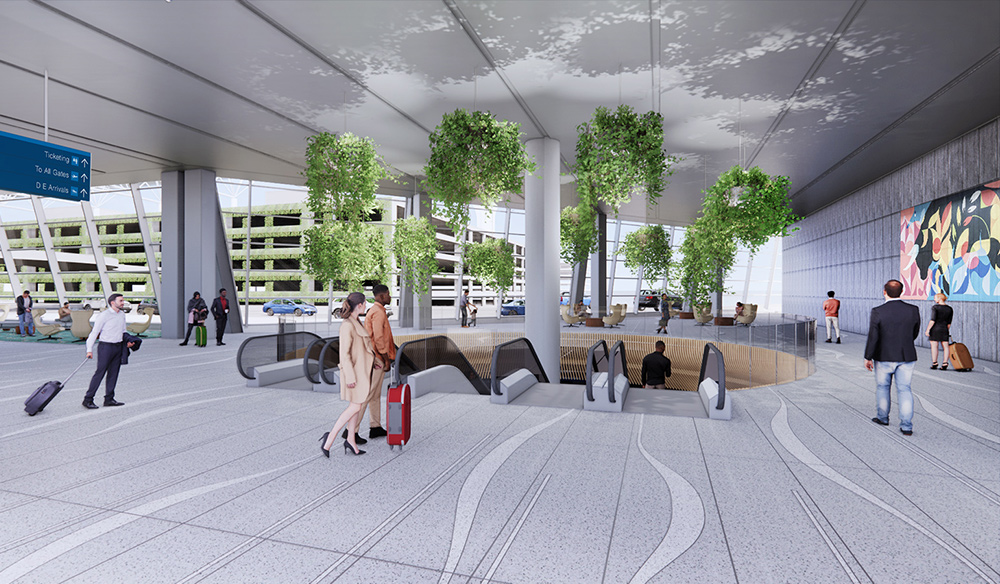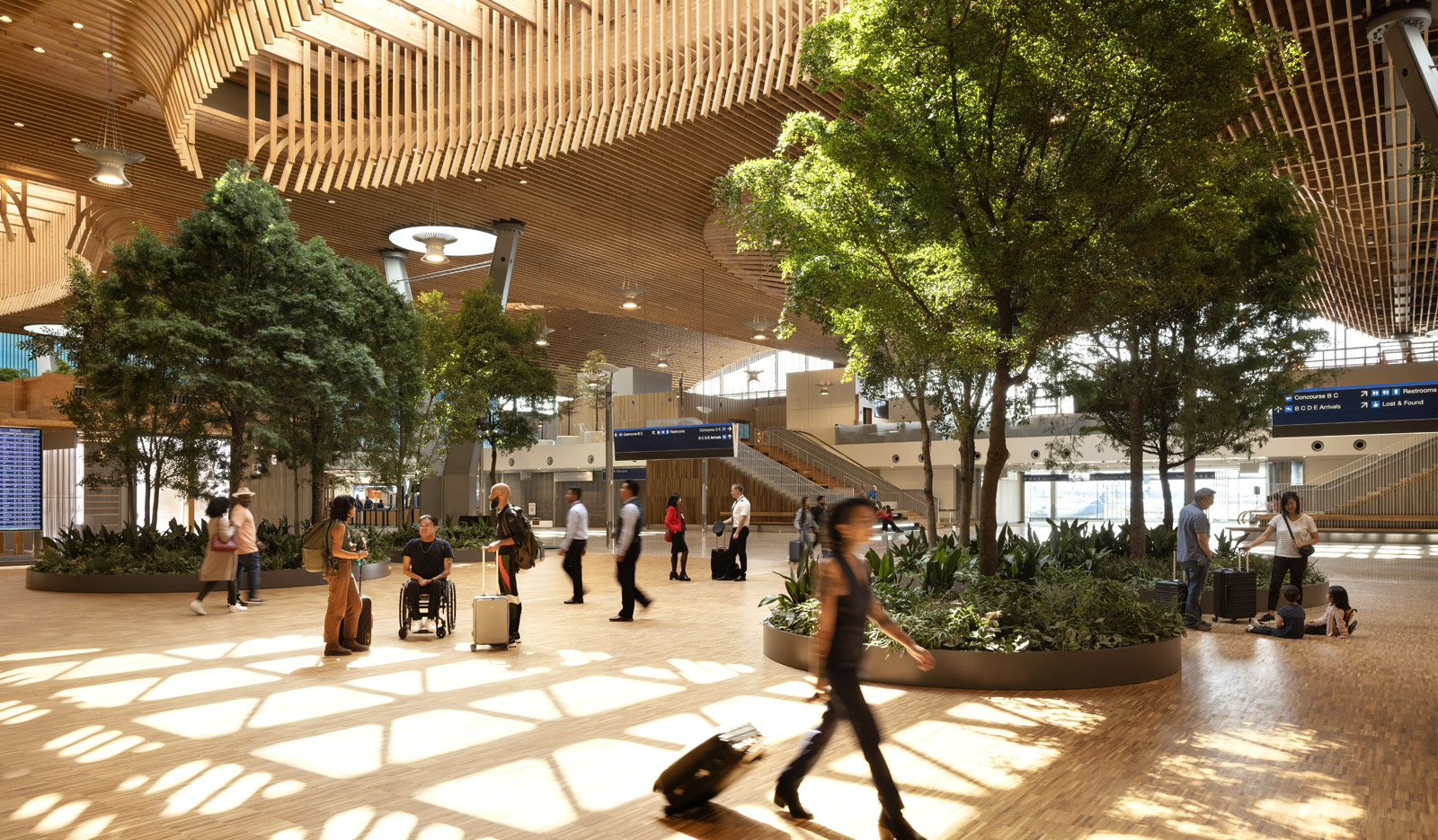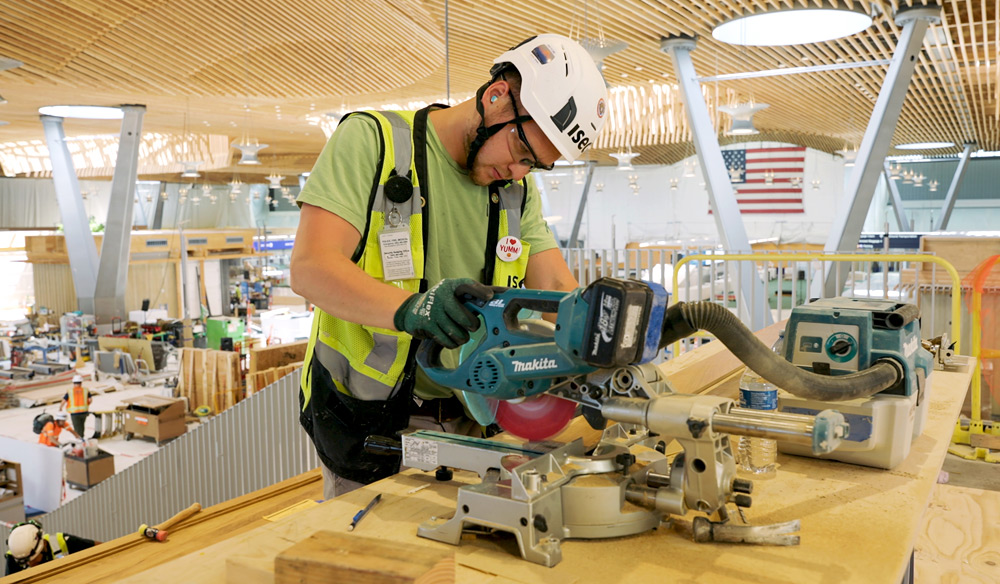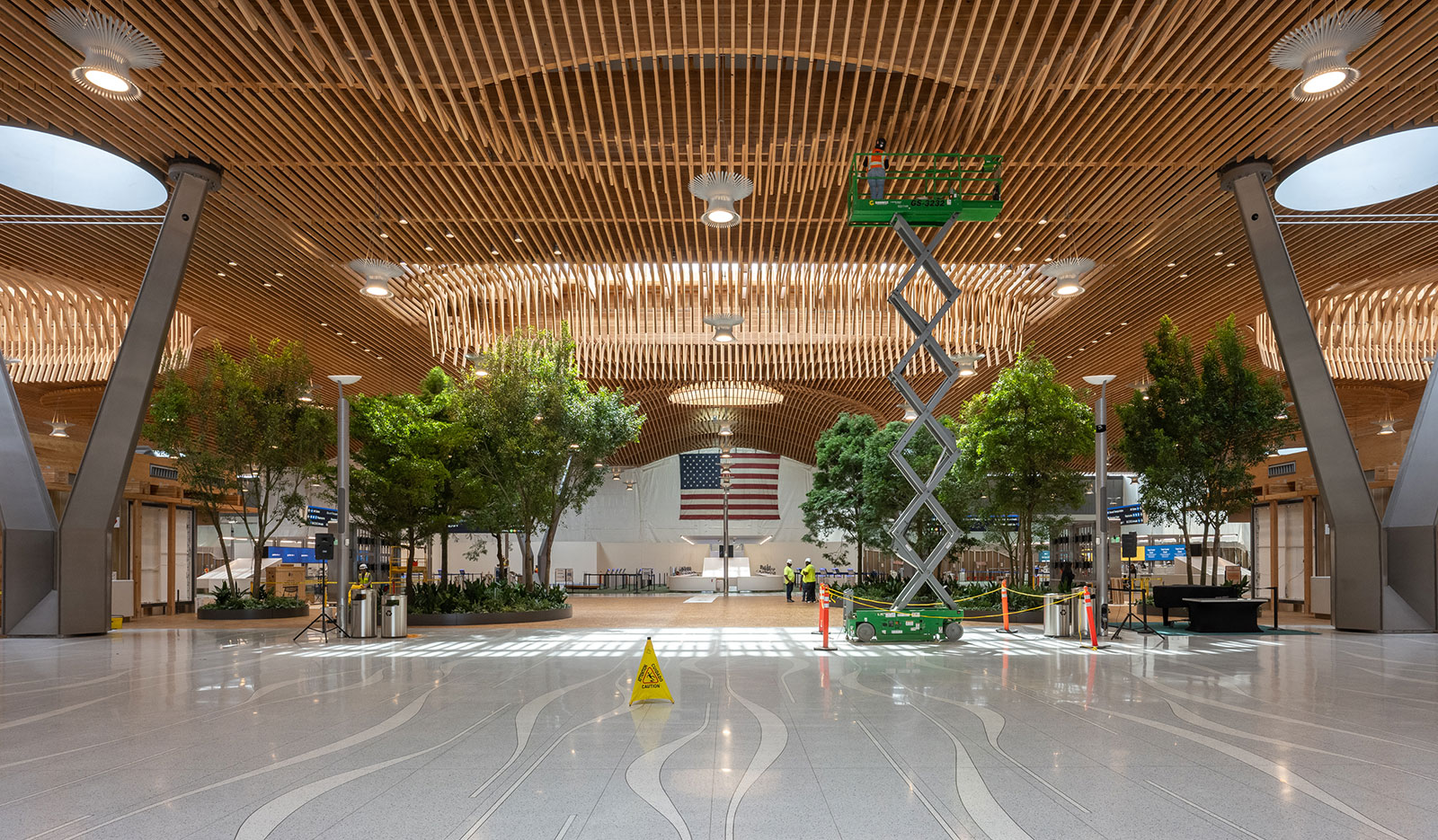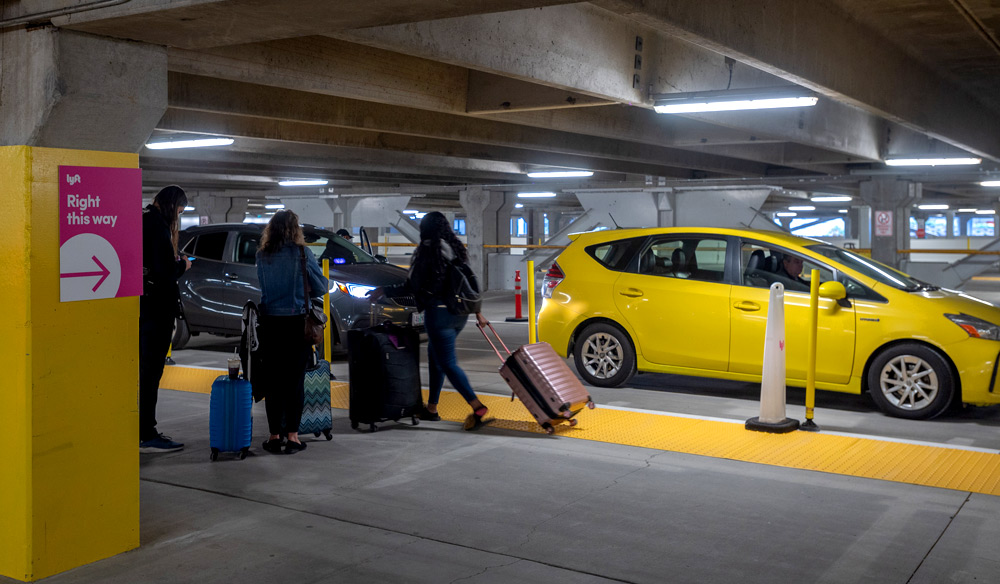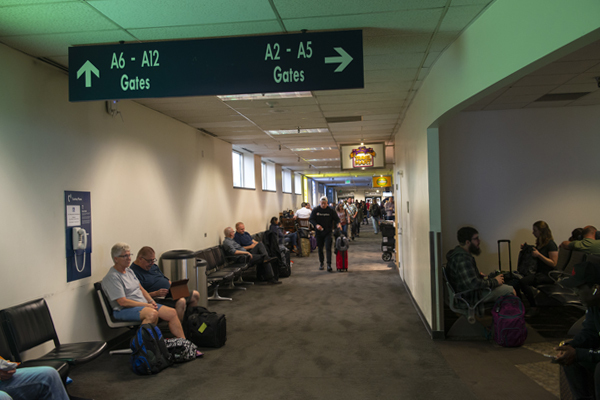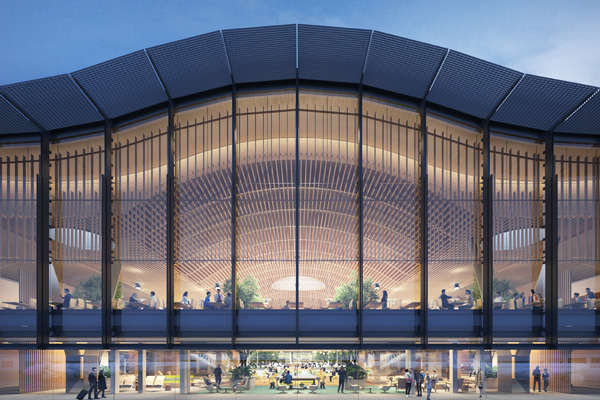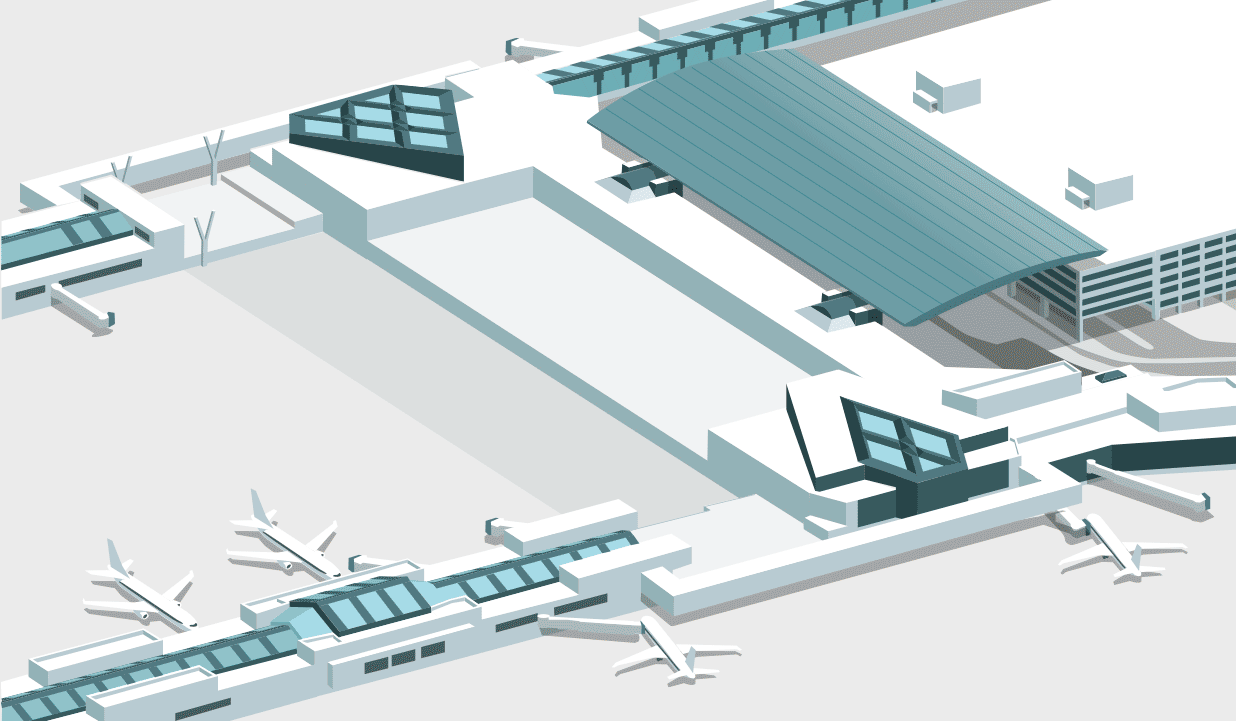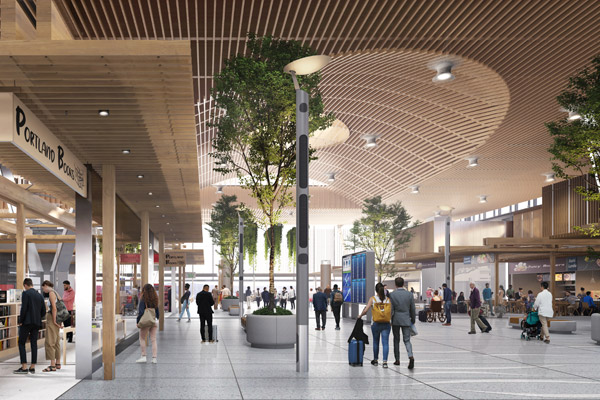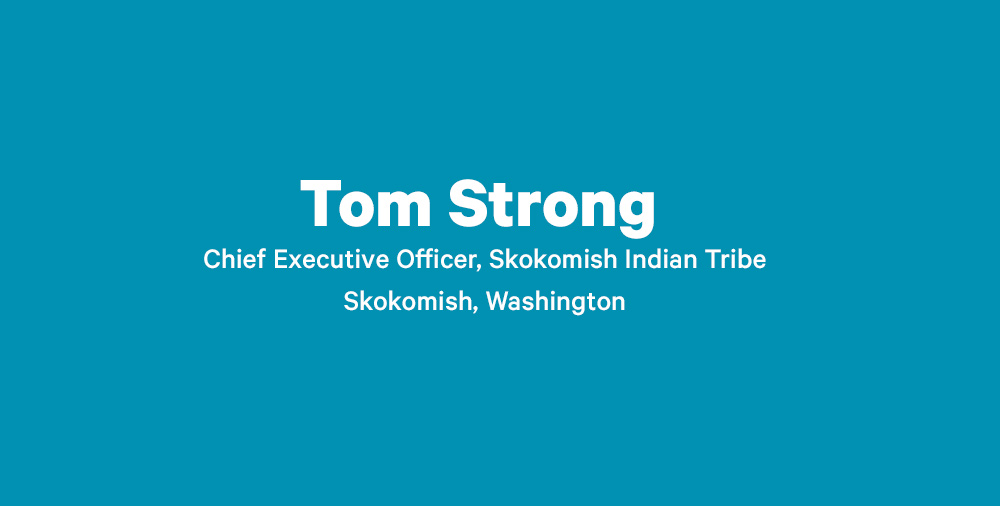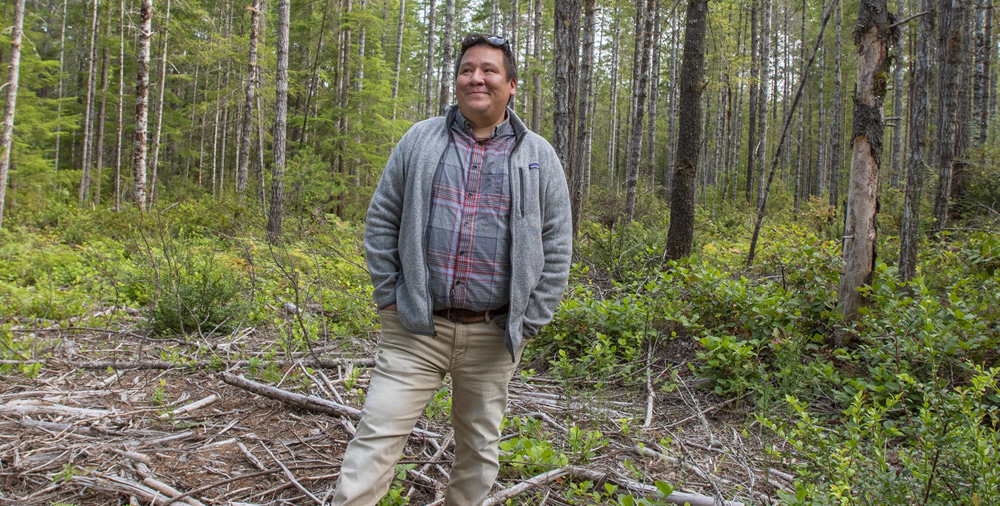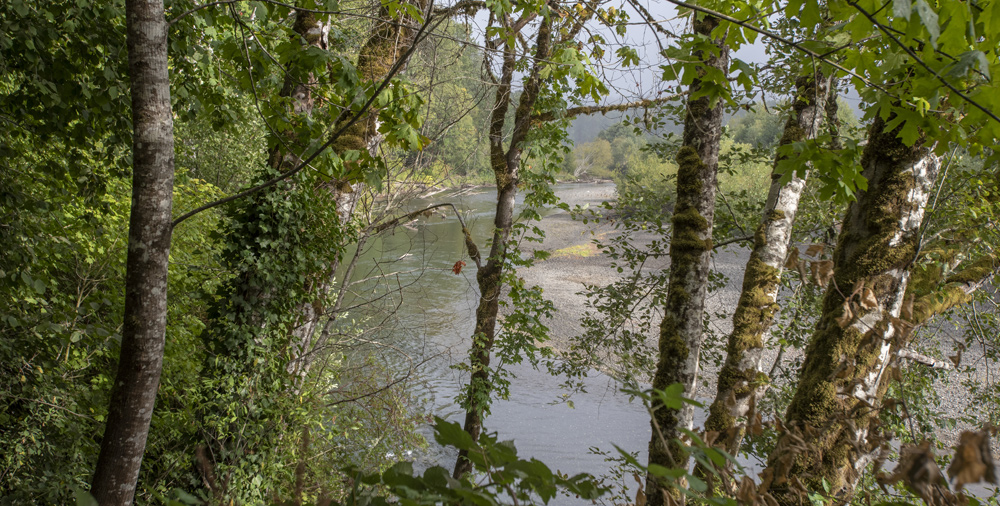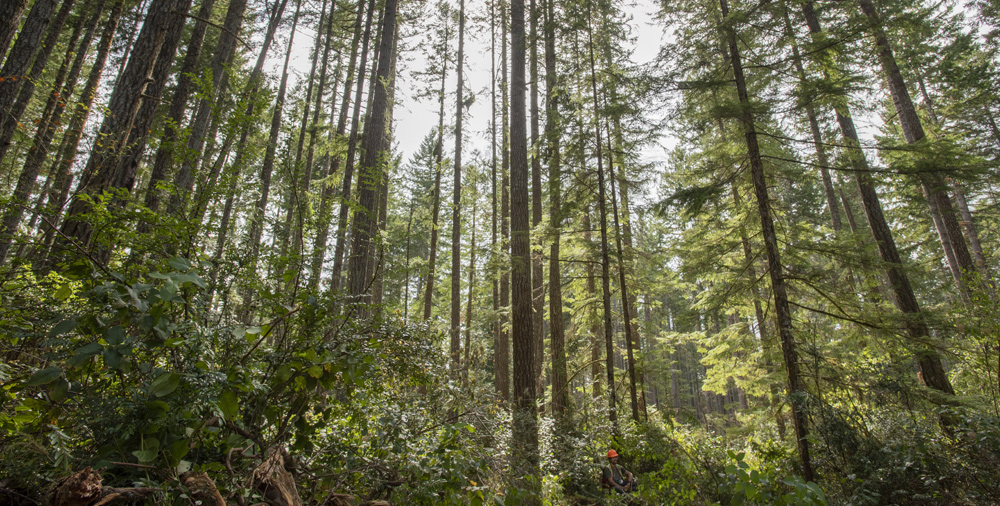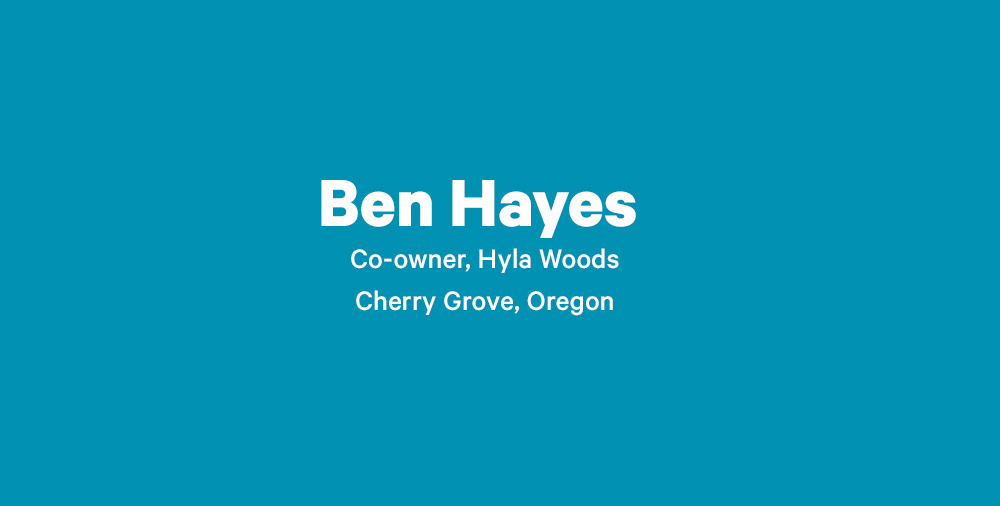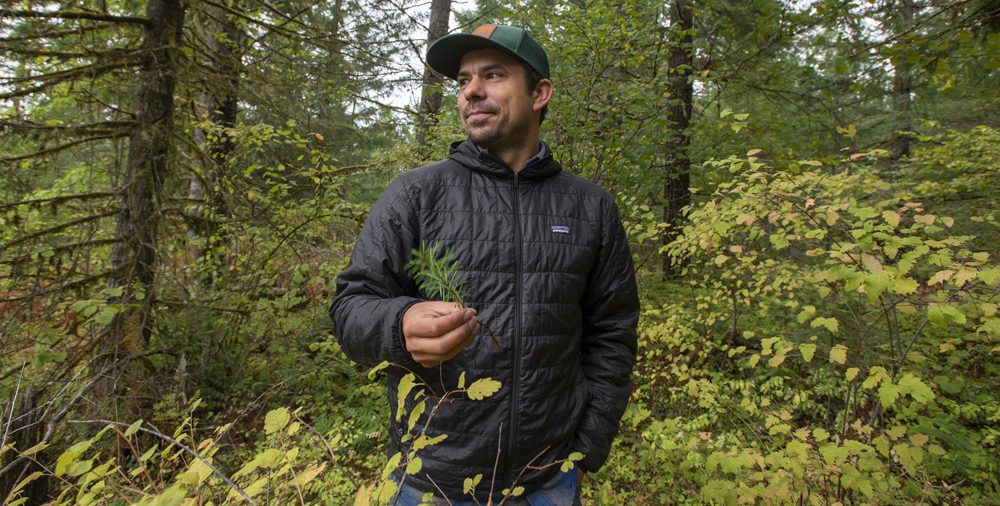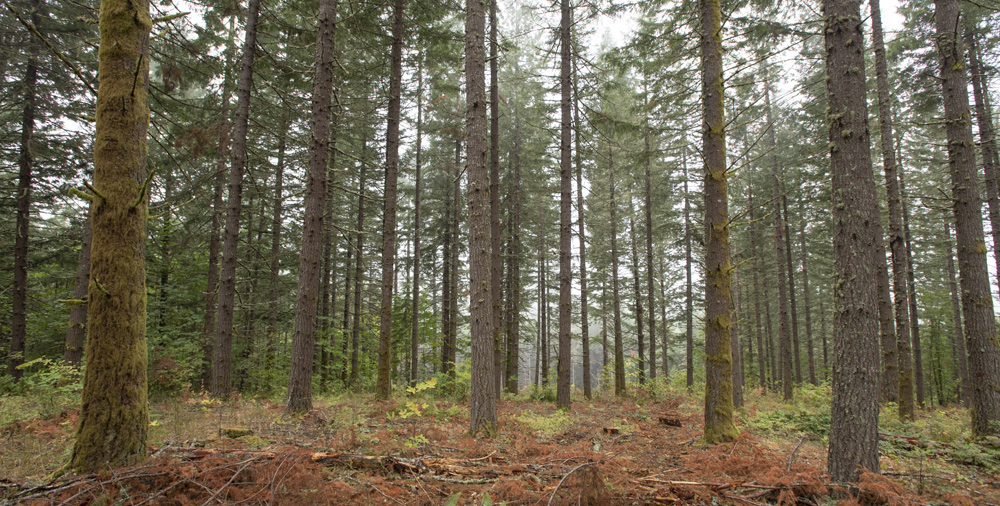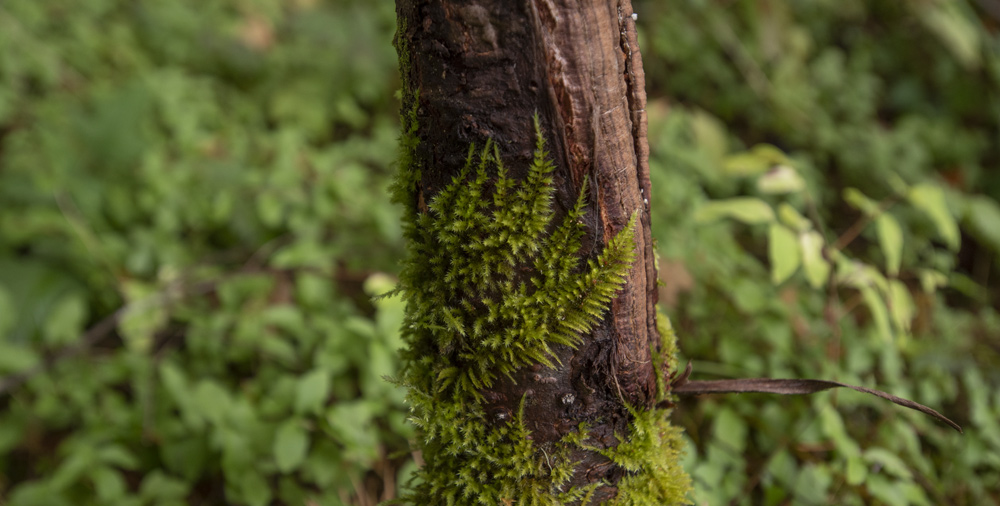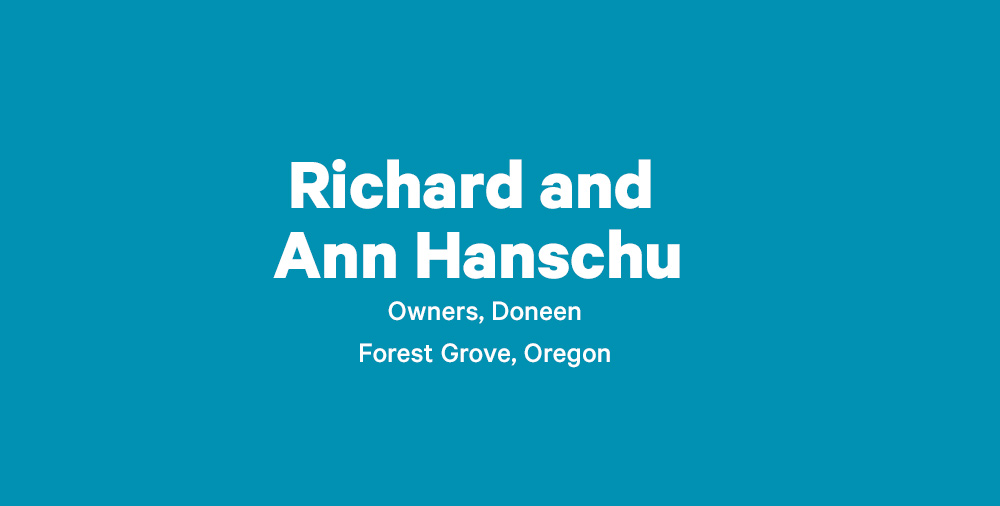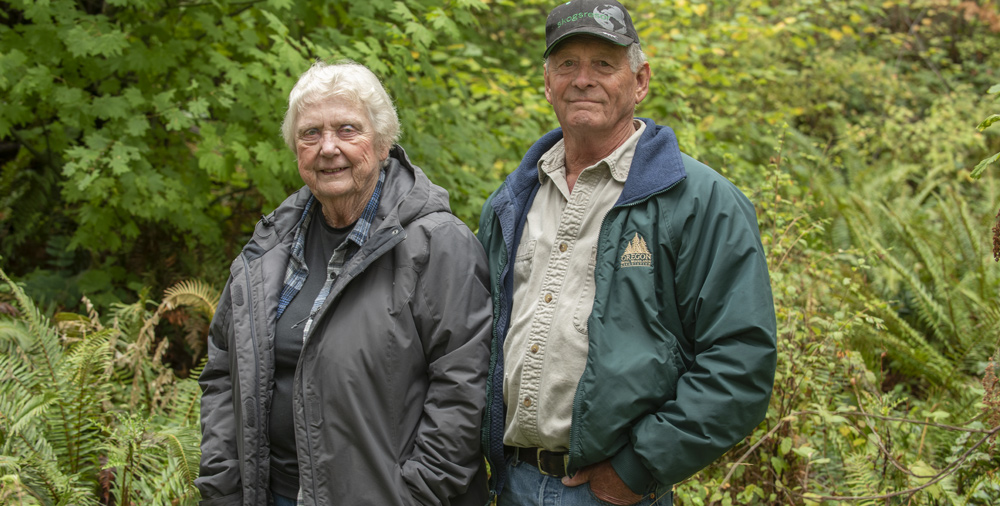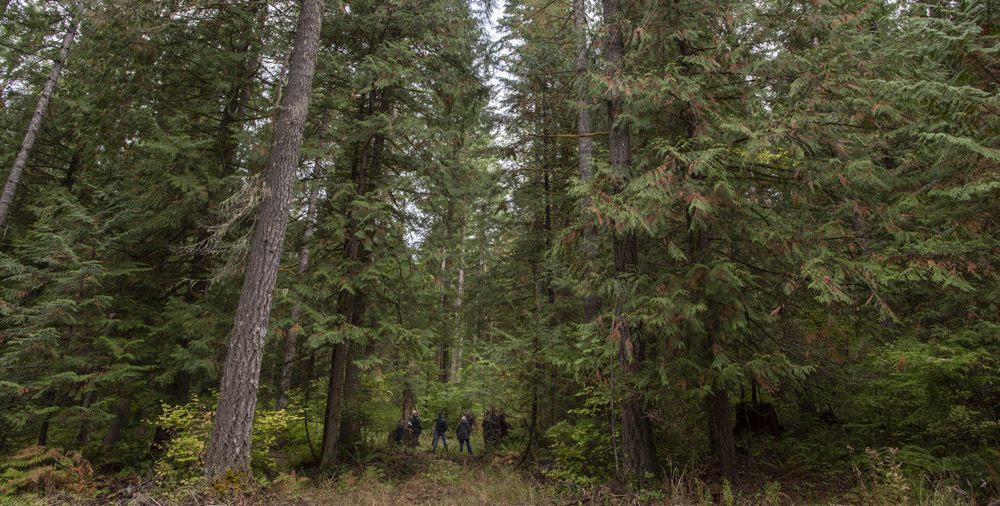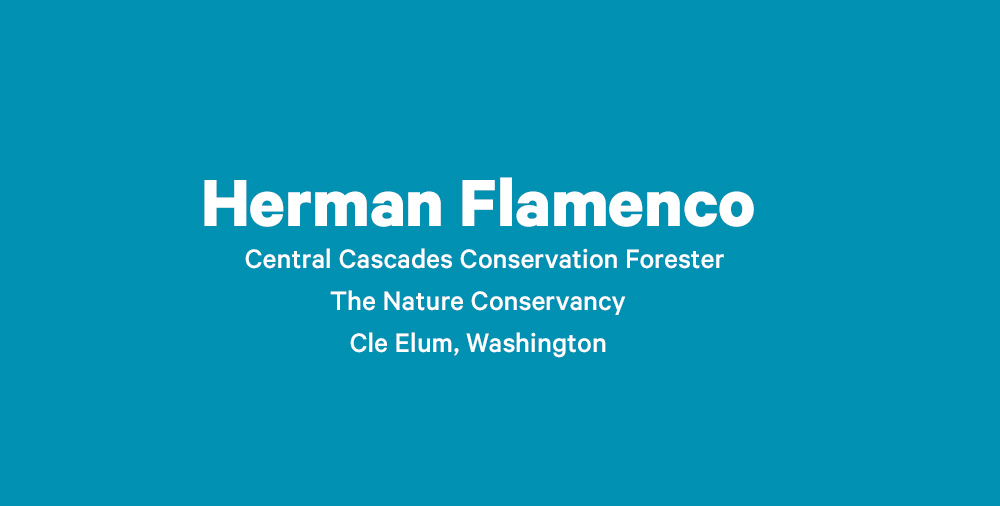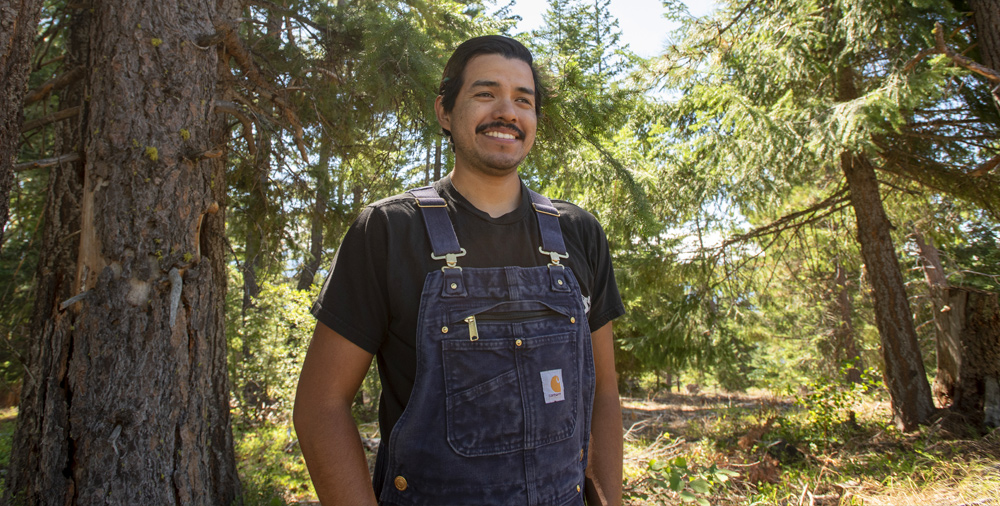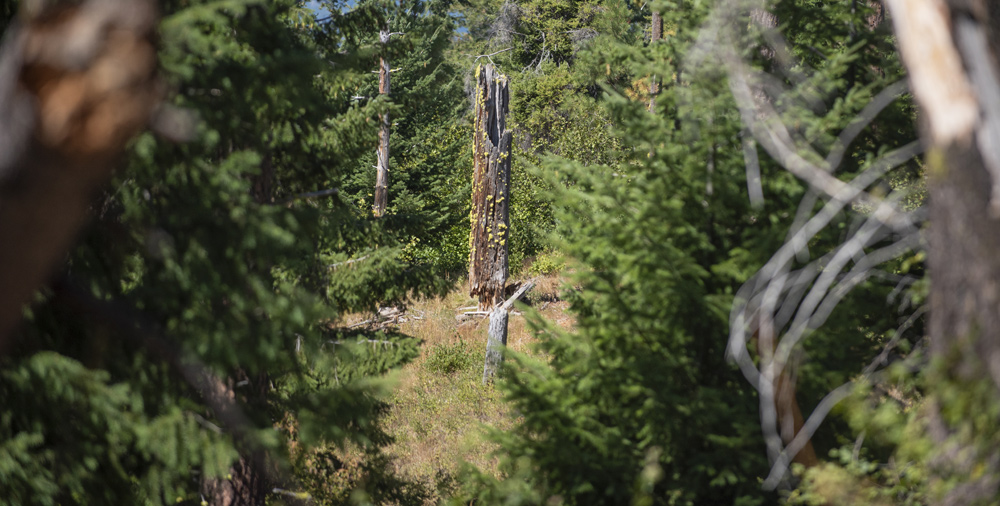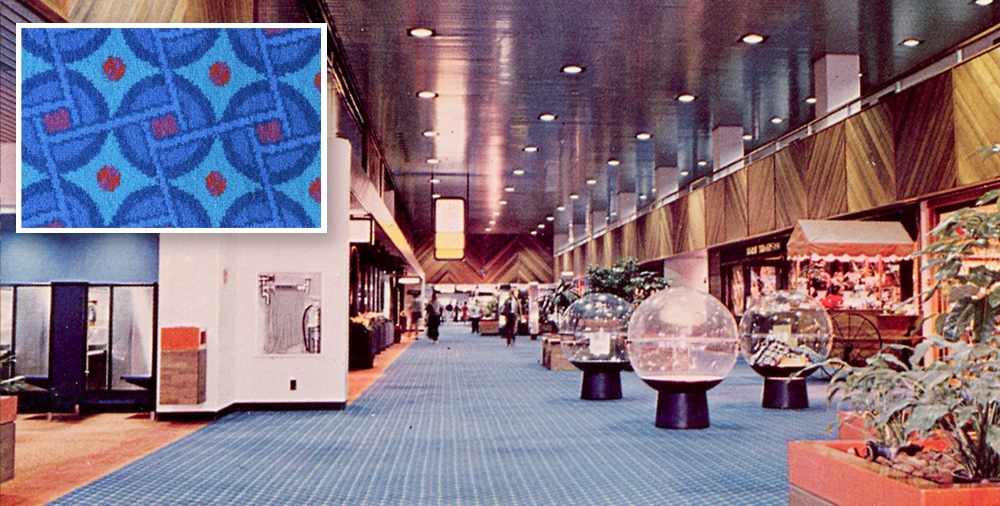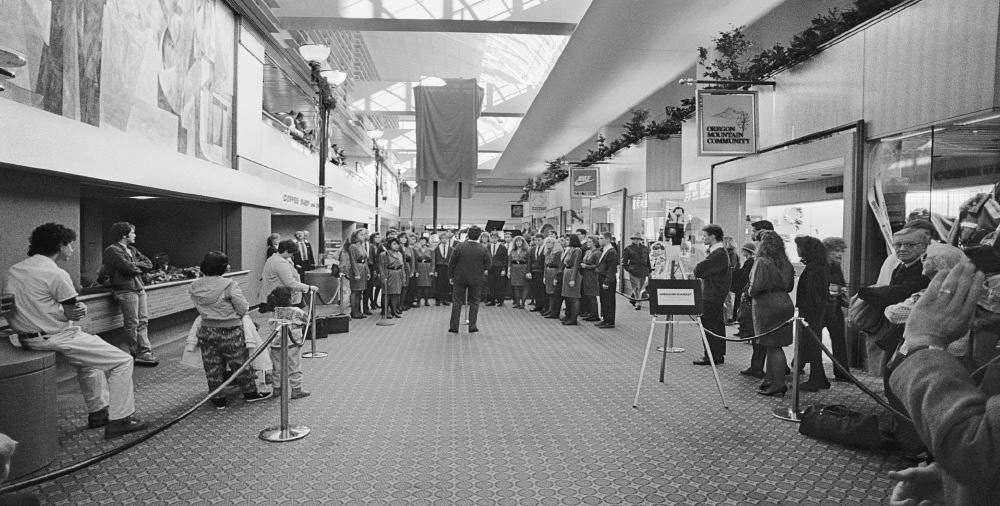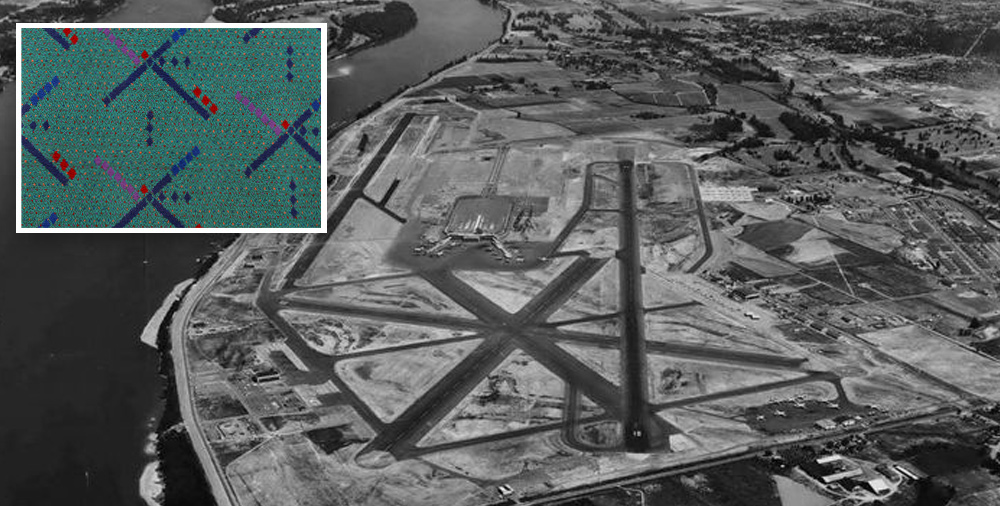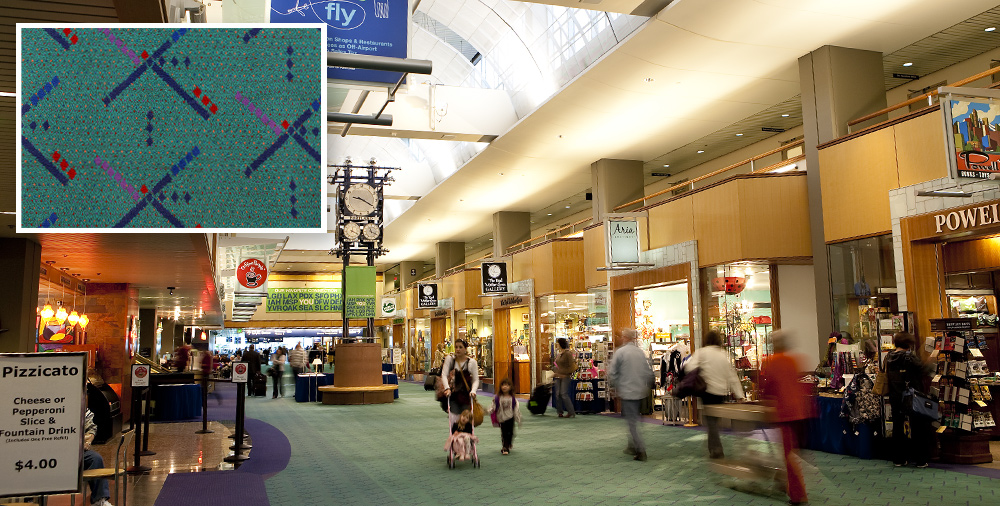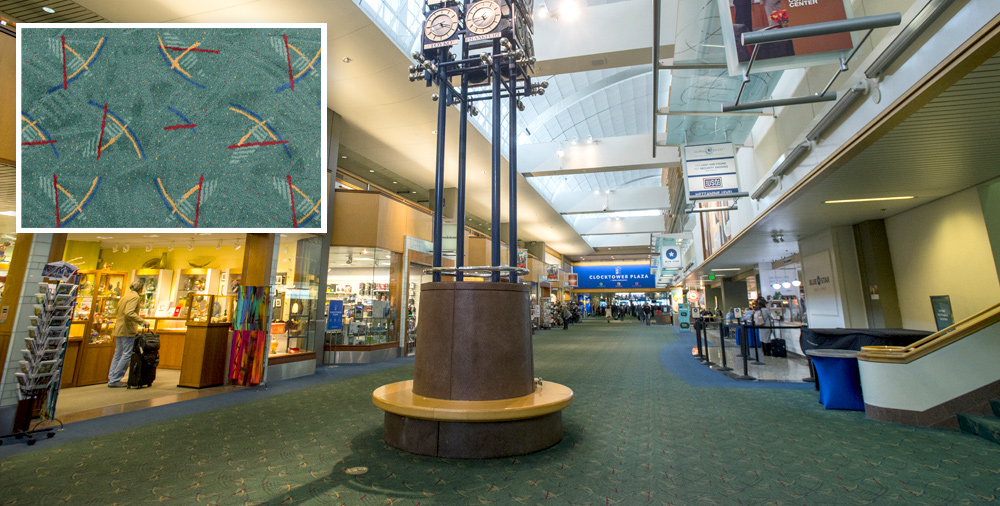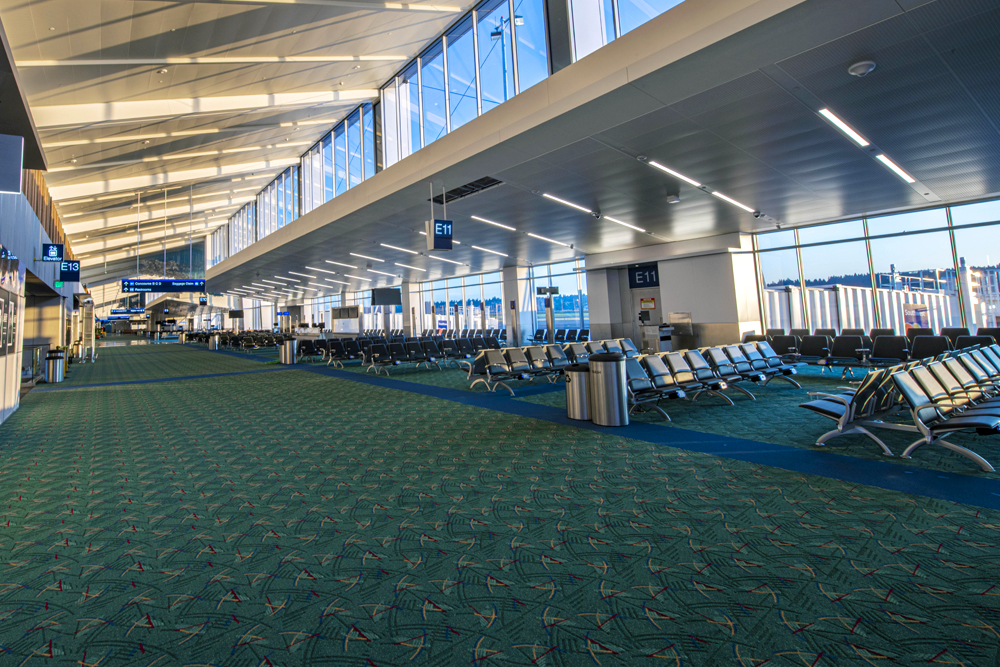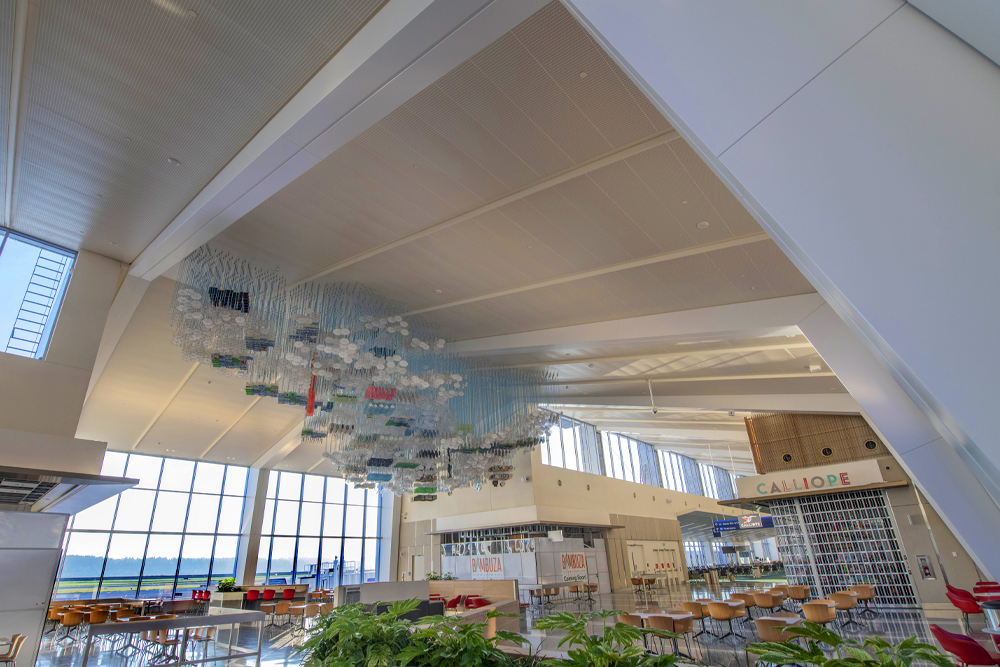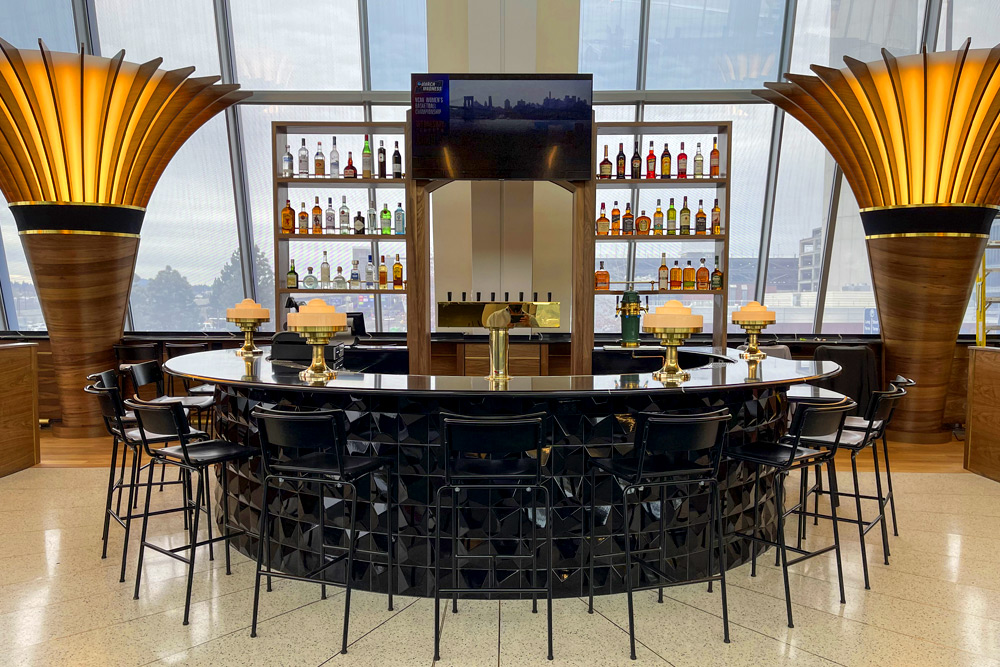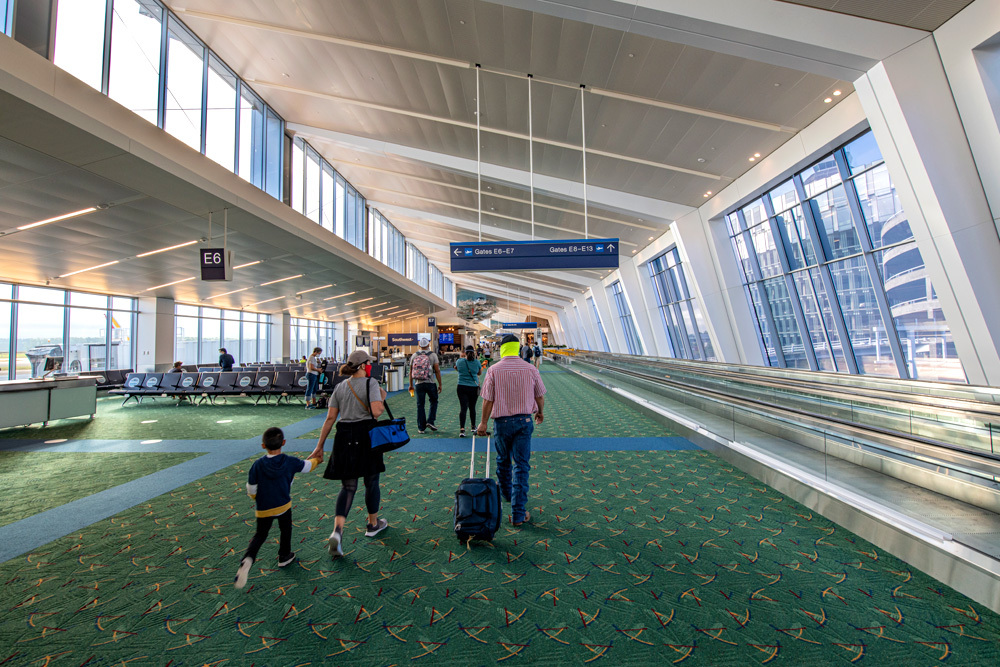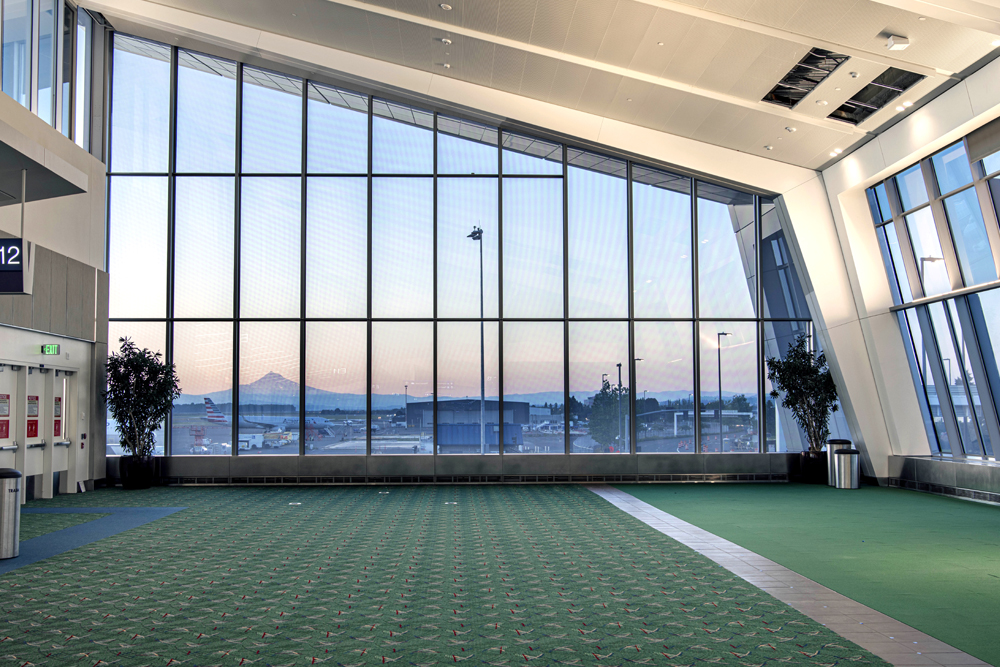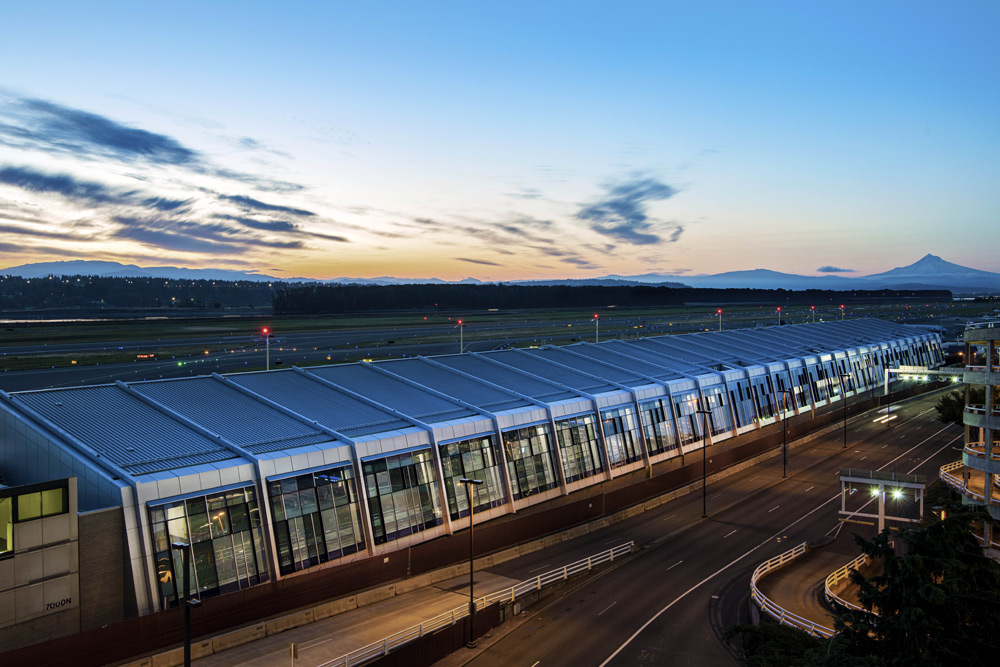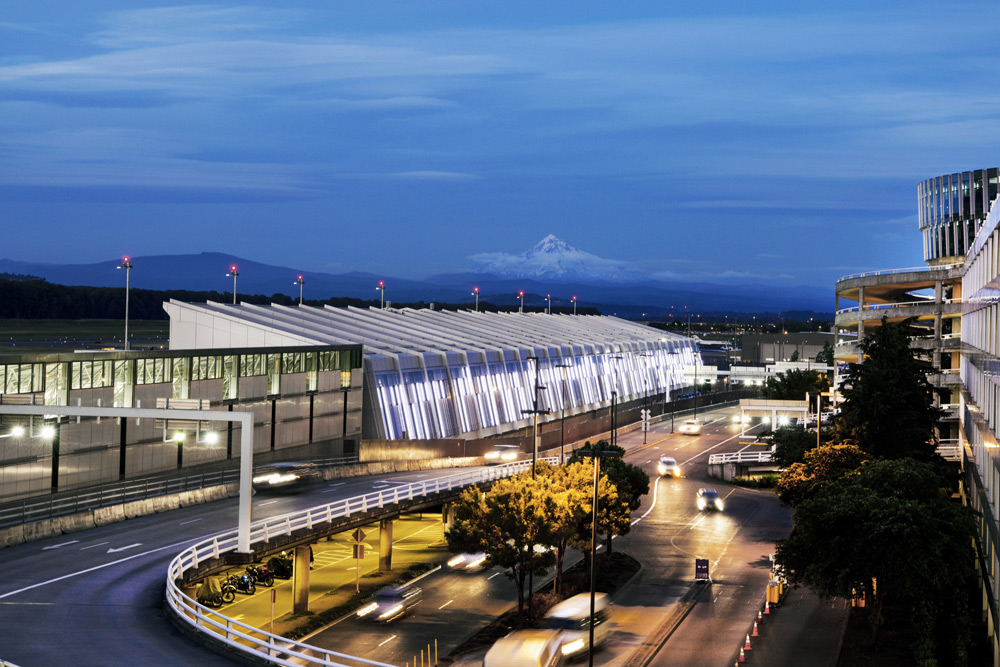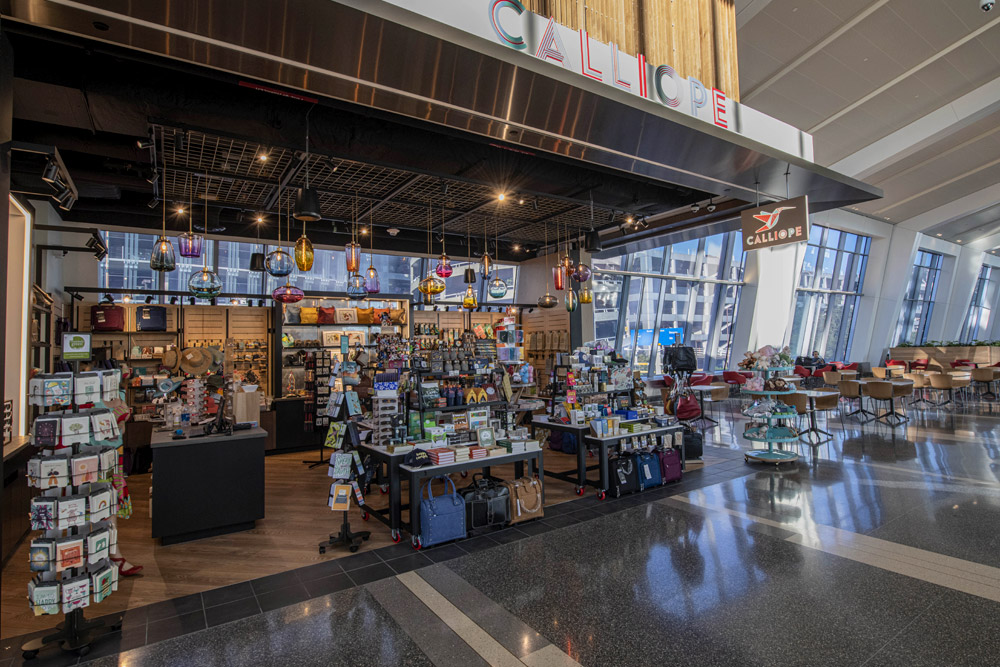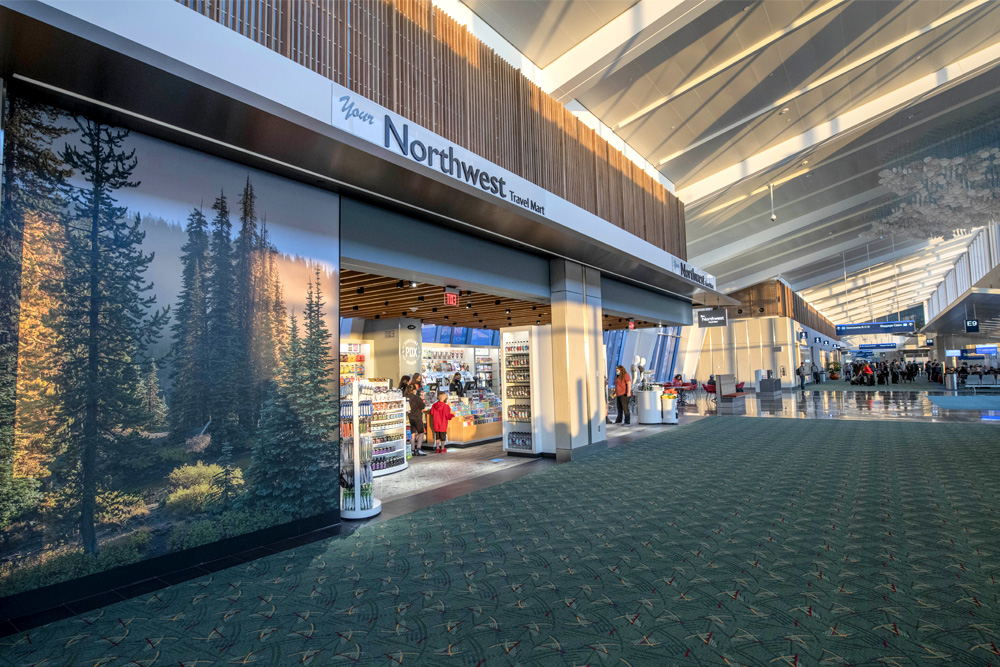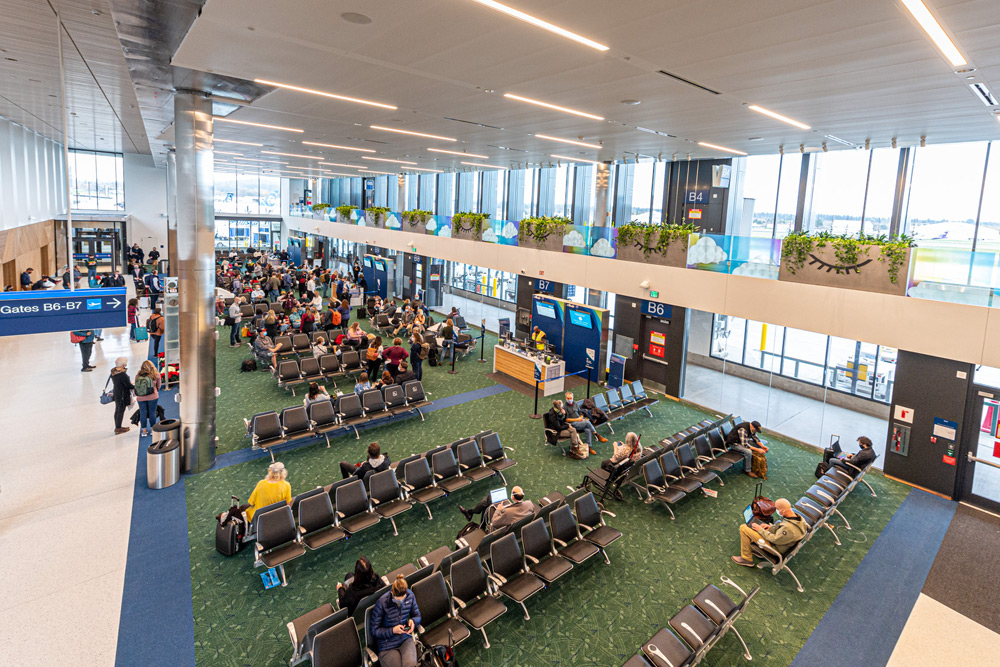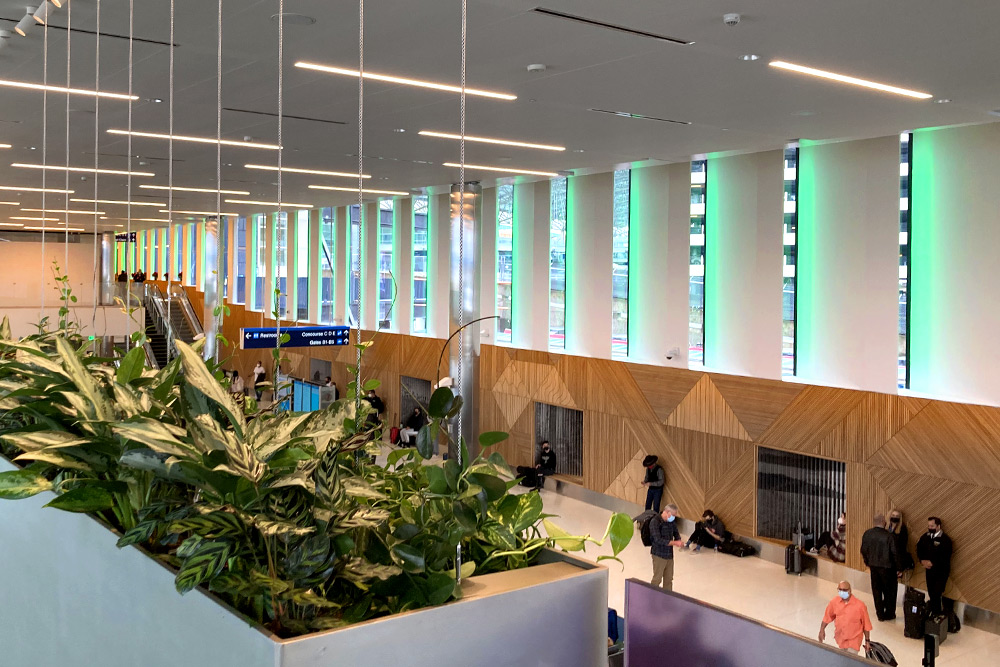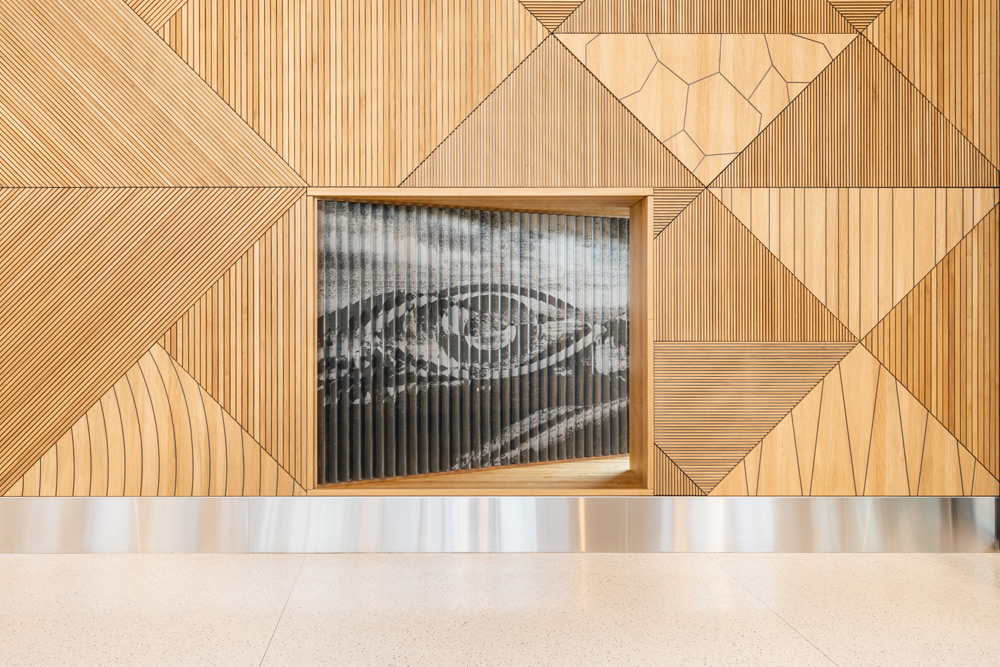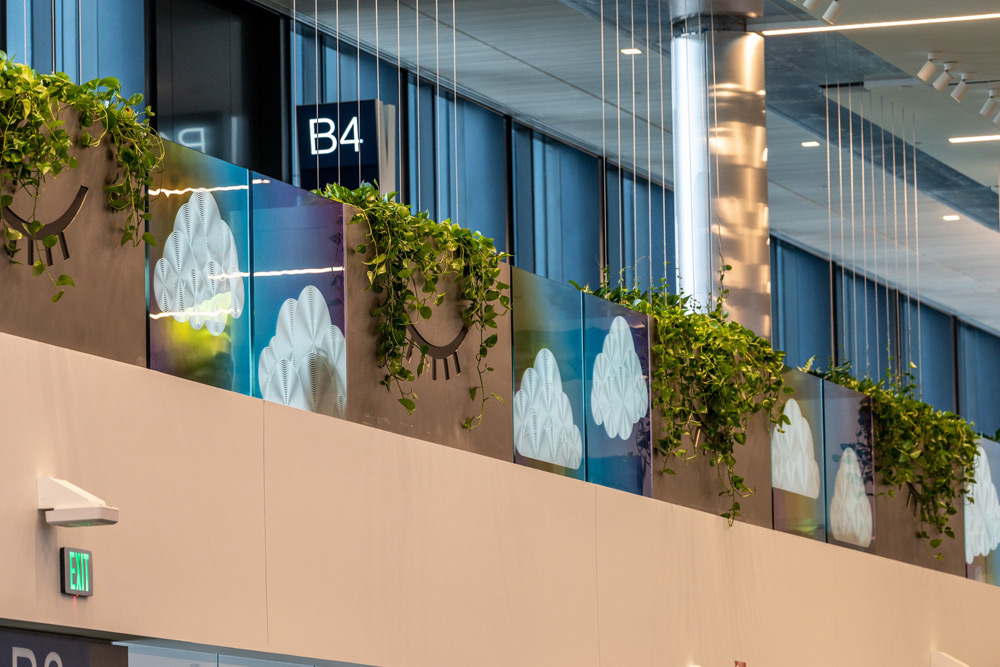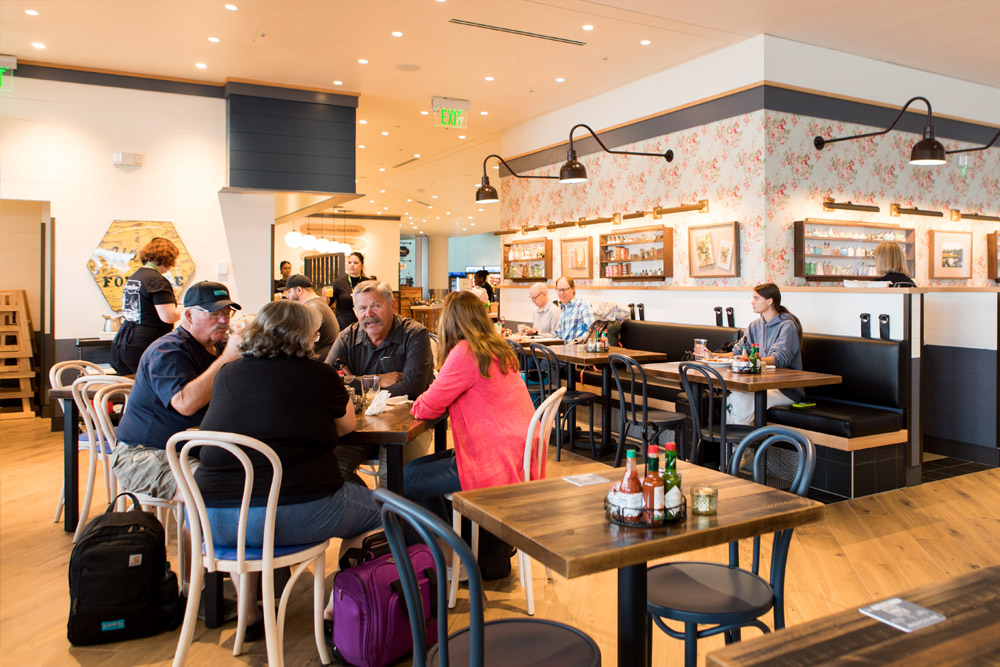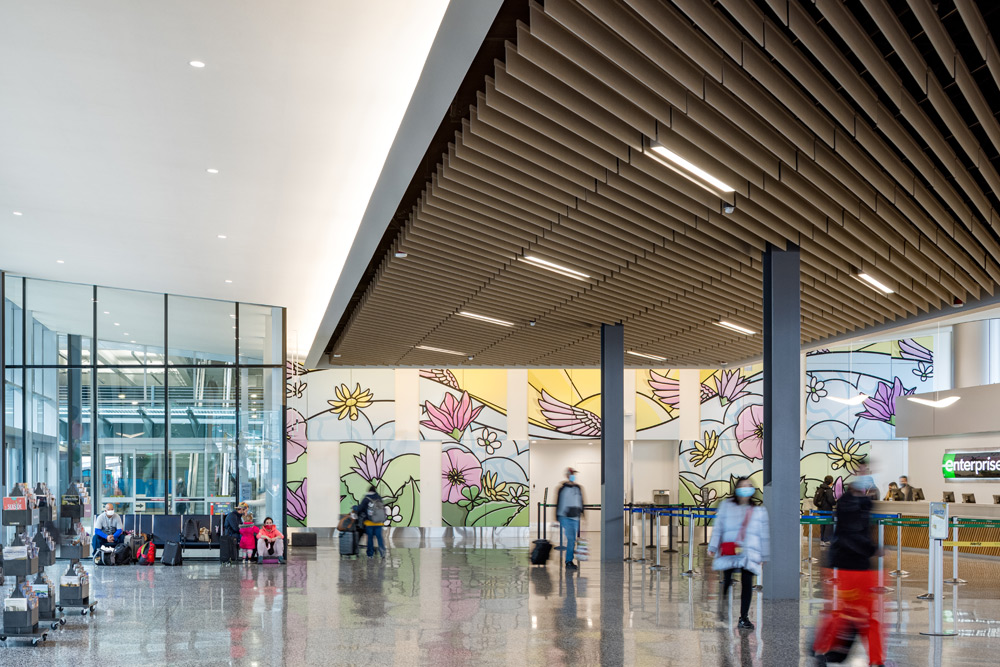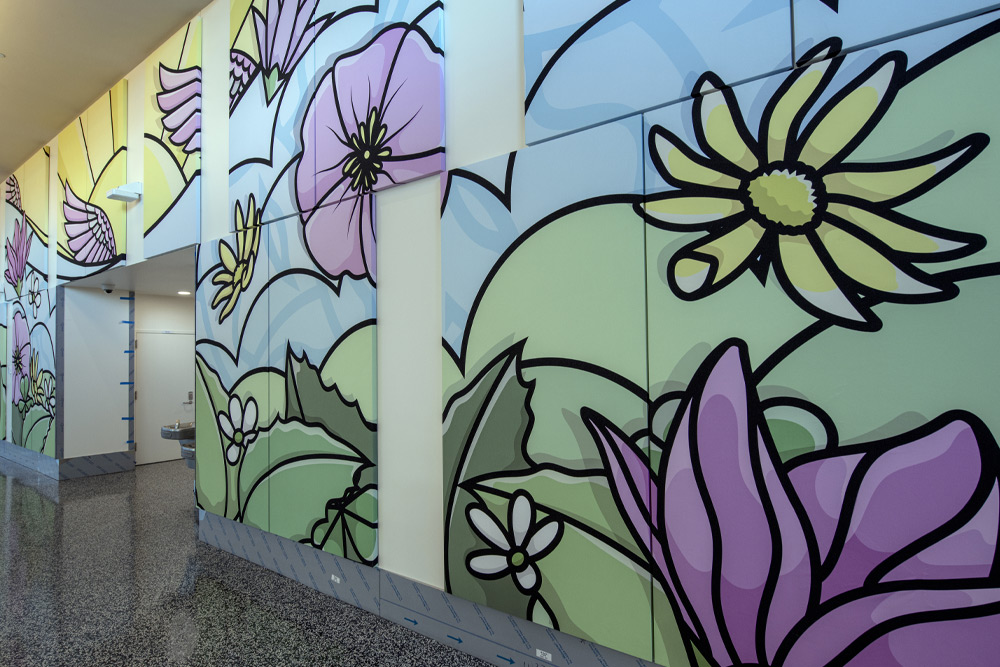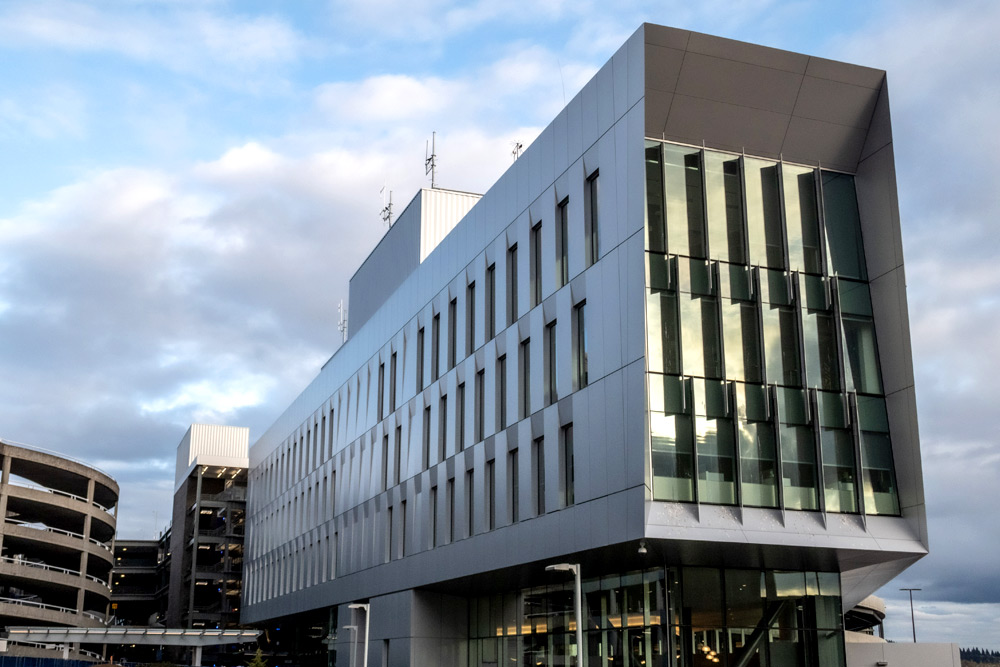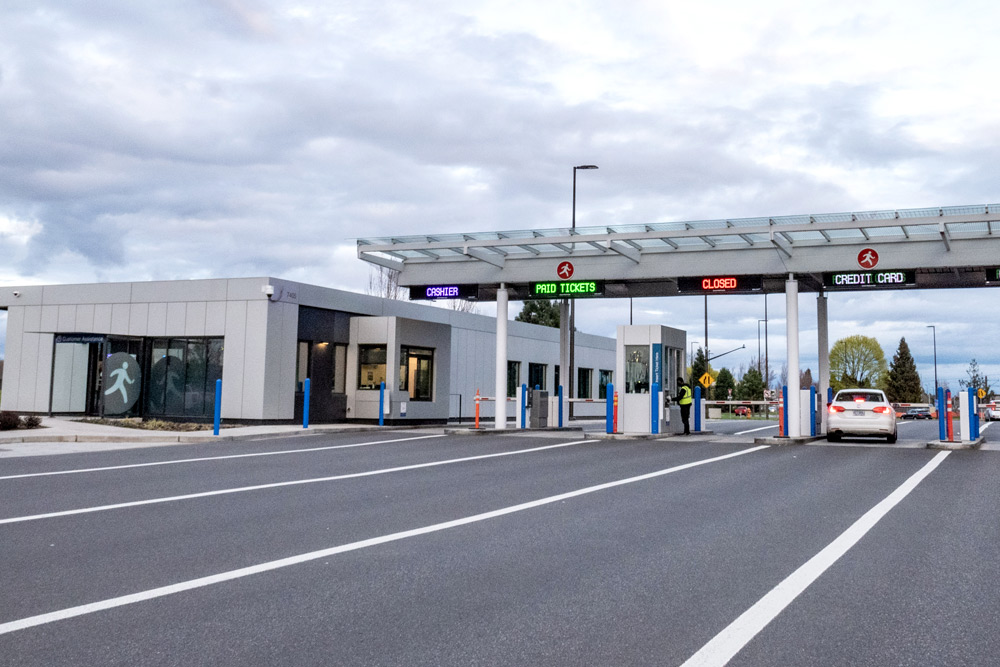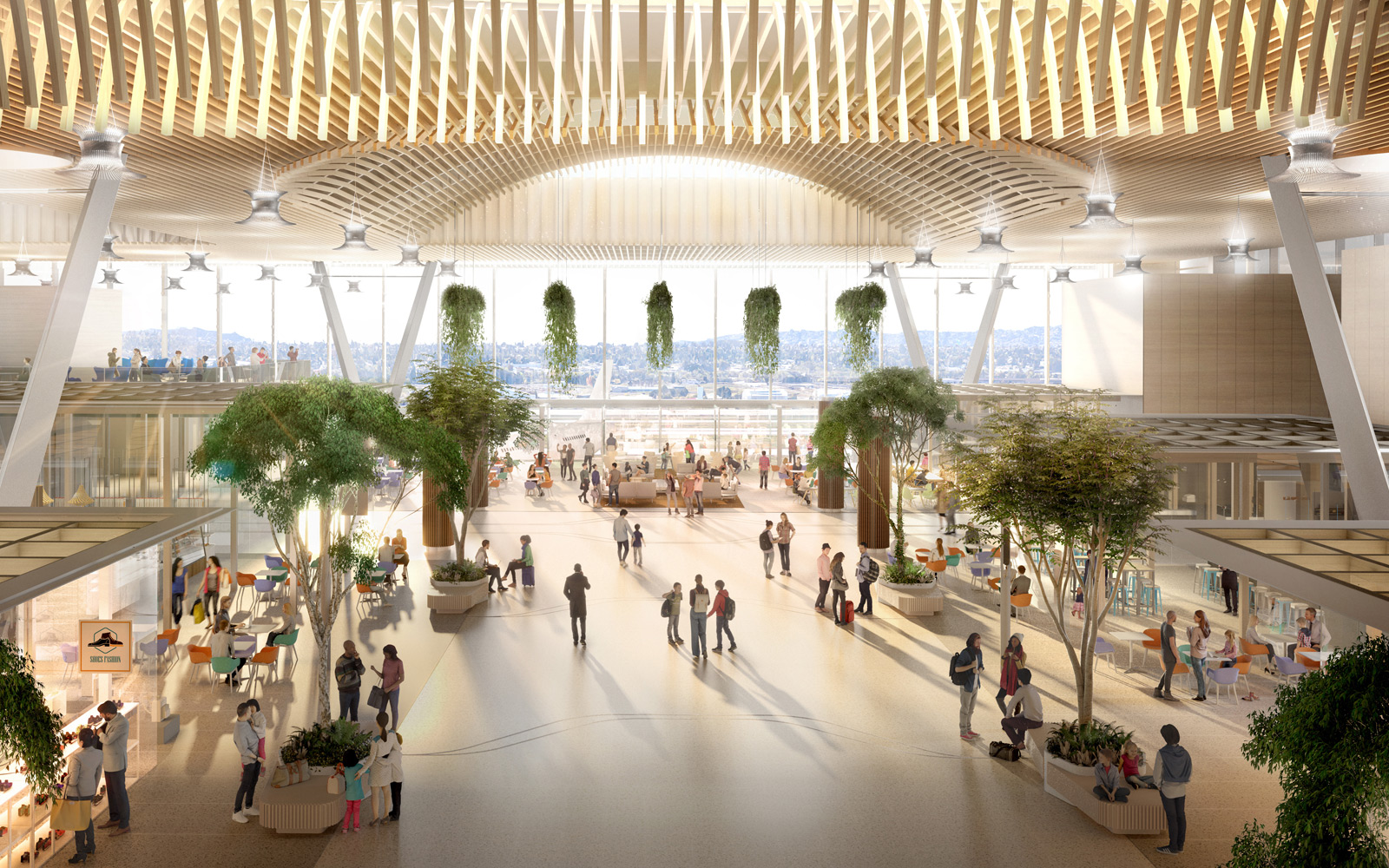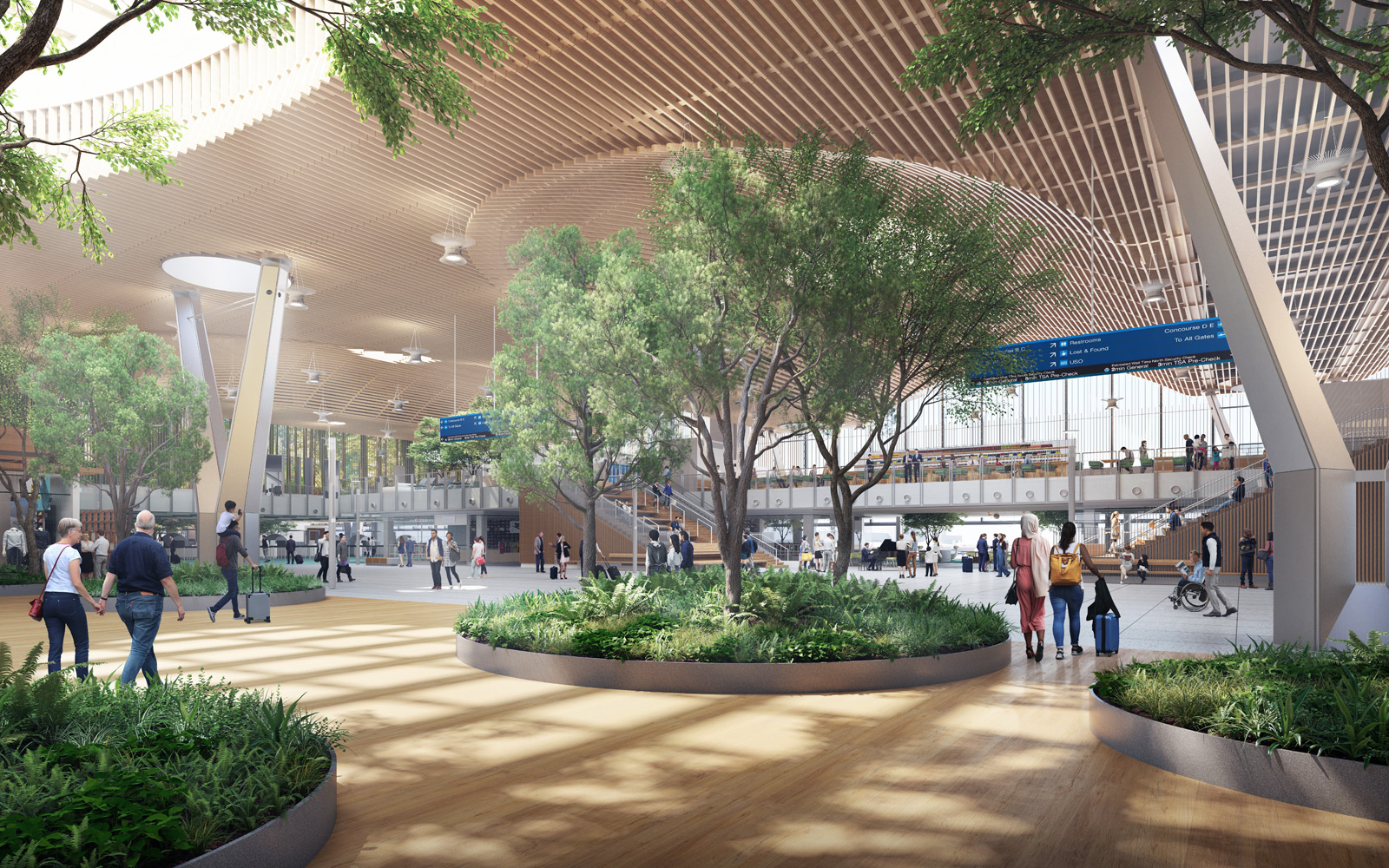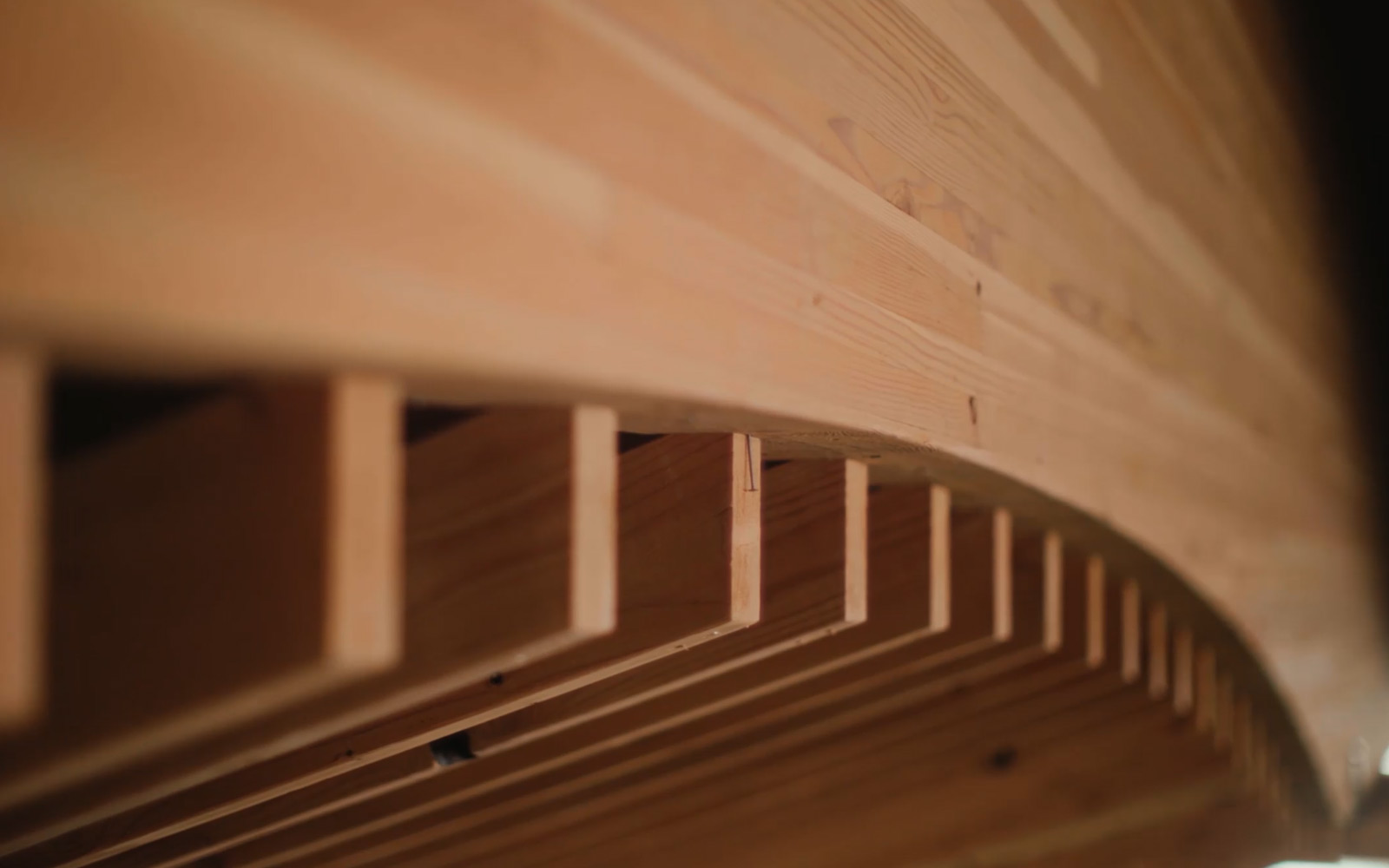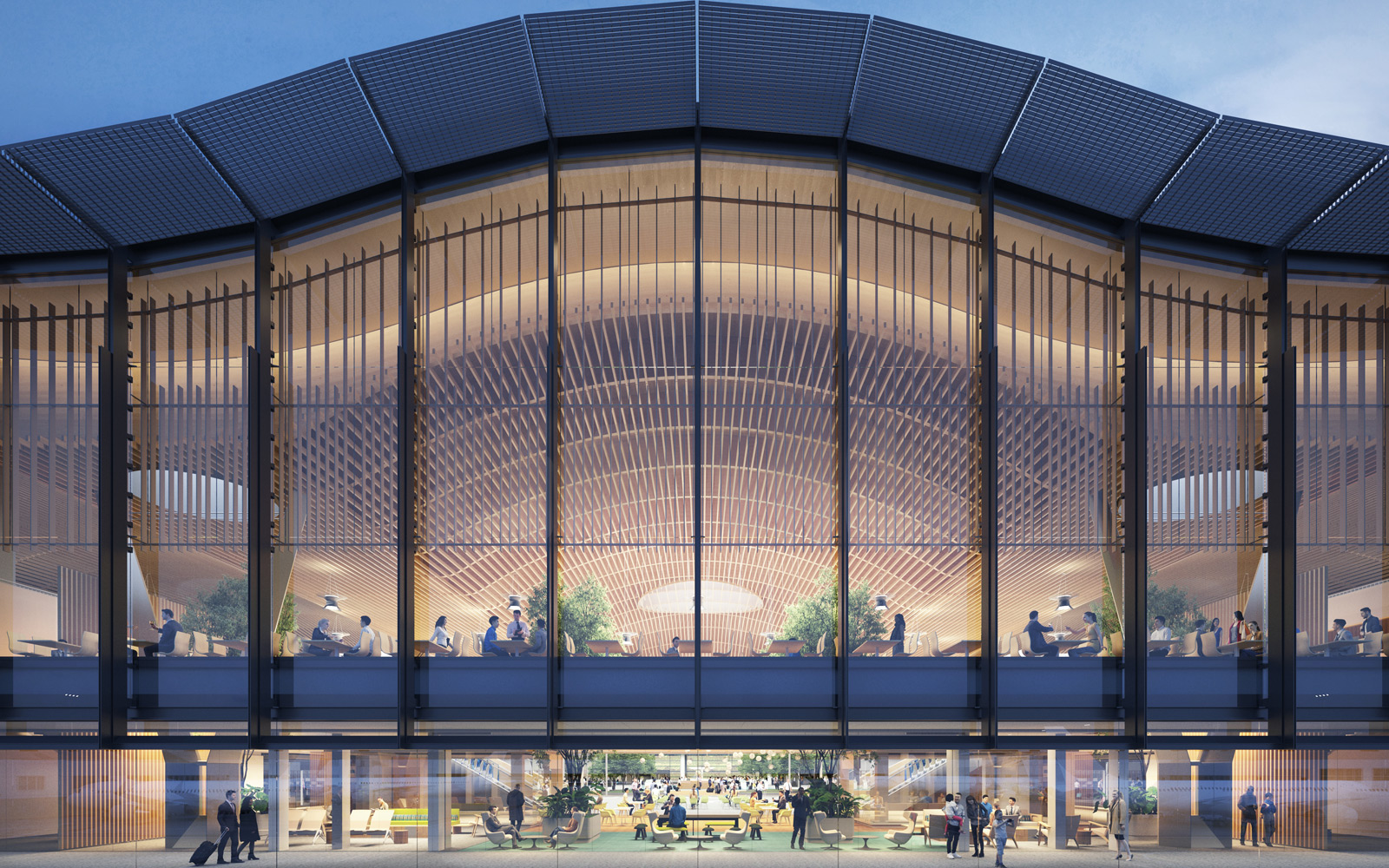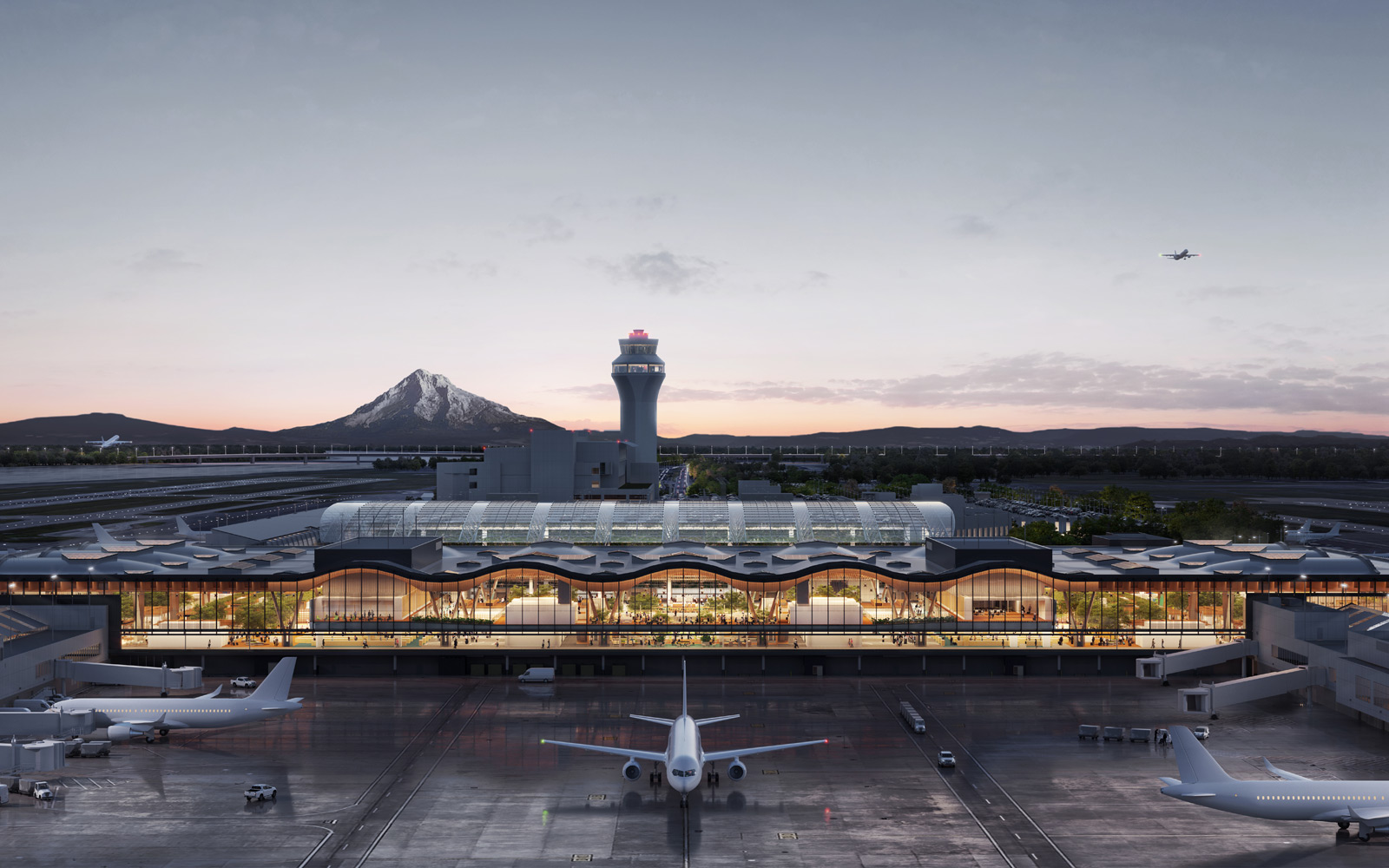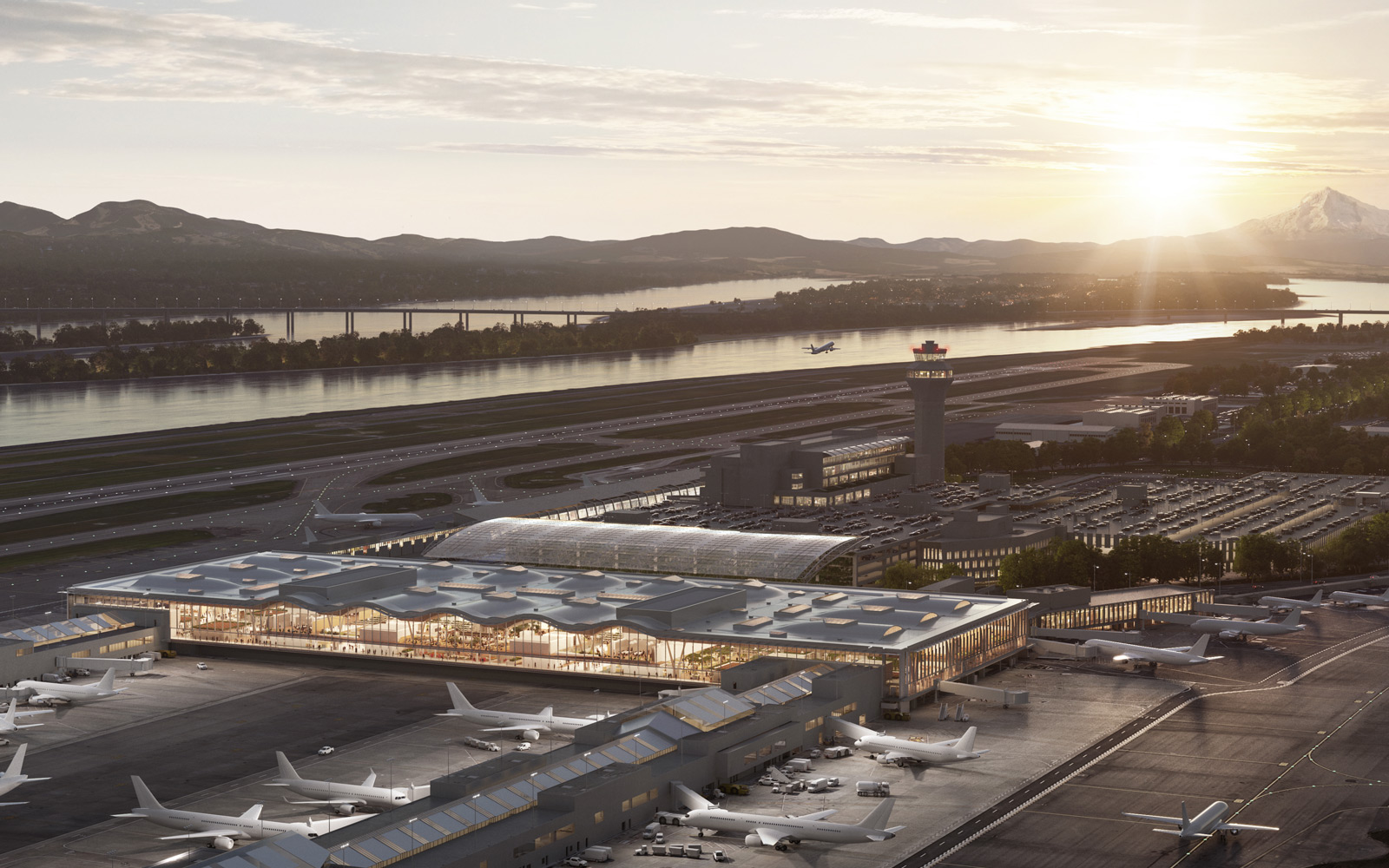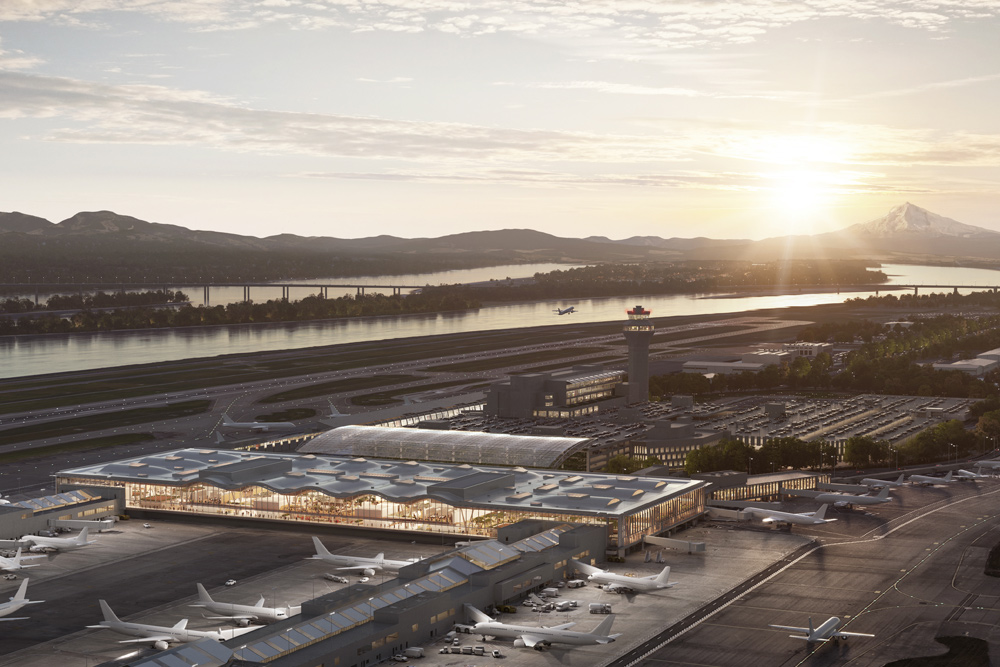 Between now and 2025, we’re working on a series of upgrades that’ll make the airport more open, flexible and energy efficient. And we’re bringing even more Pacific Northwest character to the heart of PDX.
Between now and 2025, we’re working on a series of upgrades that’ll make the airport more open, flexible and energy efficient. And we’re bringing even more Pacific Northwest character to the heart of PDX.
Quick update: This article was written in 2021. The new PDX is here! Want to meet it?
If you’ve visited PDX recently, you might have noticed a few changes — like the fact we’ve removed the ceiling pre-security. Don’t worry: This “industrial chic” aesthetic is only temporary, as we gear up to build a new roof over the airport. And that’s only part of what we have in the works.
These changes might leave you with some questions. So we’ve put together this explainer to guide you through the milestones of the key PDX Next projects — including the new main terminal, Concourse B and flexible transportation upgrades.
New Main Terminal: Talk about a challenge
The big challenge: How do you build a new roof over a major airport that’s always in motion? It takes lots of prep work. We’ve been laying the groundwork for the construction of the new main terminal since March 2020. While you may have noticed the concourse connector closed and the south security checkpoint moved, many of the other changes haven’t been as visible to travelers. Backstage, our all-star team of builders have focused on logistical challenges like moving all of the underground pipes and cables. They’ve successfully set the scene for the many steps that follow.
 Once the Clocktower Plaza closes in April 2021, we begin the big work of expanding the airport’s main terminal 150 feet west. The highlighted area in the left image spotlights where this work will take place. The rendering to the right shows the new main terminal once it’s complete.
Once the Clocktower Plaza closes in April 2021, we begin the big work of expanding the airport’s main terminal 150 feet west. The highlighted area in the left image spotlights where this work will take place. The rendering to the right shows the new main terminal once it’s complete.
Phase 1: Columns, cables and connectors (2021)
What you’ll notice most: The Clocktower Plaza, aka the shops and restaurants pre-security, closes for good in April 2021. (You’ll still find coffee, snacks and shops after security checkpoints.)
Why it’ll be worth it: We’re creating brighter, more open spaces and making room for more local shops and restaurants.
You probably have not noticed we’ve rerouted the utilities beneath the airport. But you will see more obvious signs of progress come spring 2021, with the closure of the beloved Clocktower Plaza in April. (Don’t worry: We’re doing all this work to open up even more spots for local shopkeepers, chefs, baristas and bartenders.)
One of the key steps happening in 2021 is installing giant Y-shaped columns, which will soon support the new roof. After the columns are in place, even bigger work begins: expanding the main terminal 150 feet west. To keep your experience as smooth as possible, we’ll build bypasses around the construction site in the airport’s core. We’ll be sustainably upcycling components from the former concourse connector to build these new hallways. The bypasses will be in place for several years to help travelers easily get to their gates while the construction continues behind insulated walls.
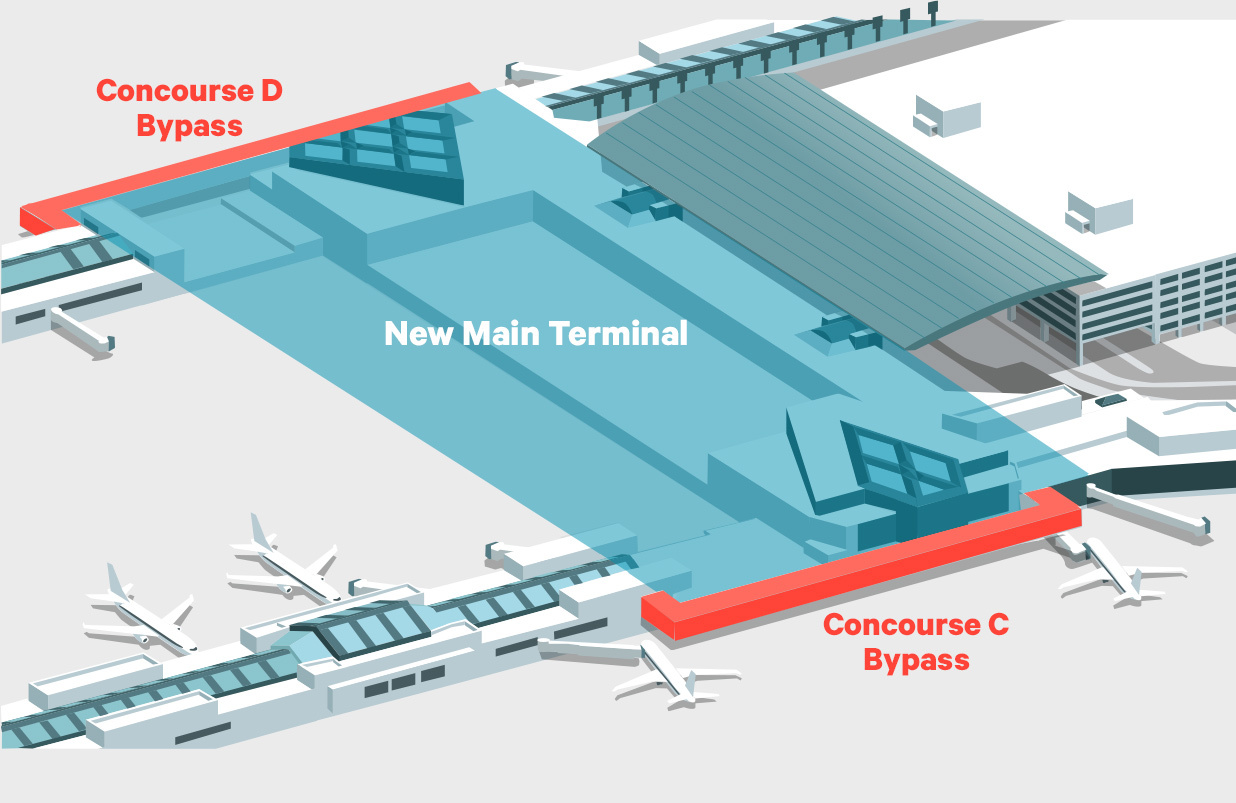 In January 2021, we closed what might've been your favorite shortcut at PDX: the concourse connector between the airport's south and north wings. We're upcycling pieces from the concourse connector to build bypasses so passengers can easily avoid the construction happening in the main terminal.
In January 2021, we closed what might've been your favorite shortcut at PDX: the concourse connector between the airport's south and north wings. We're upcycling pieces from the concourse connector to build bypasses so passengers can easily avoid the construction happening in the main terminal.
Phase 2: Building a brand-new roof (2022)
What you’ll notice most: A different flow to get to your gate — you’ll take a short detour around the construction in the main terminal (happening behind the ticket counters).
Why it’ll be worth it: In short, more #PNW views and character. Local architects and sustainability experts, led by ZGF Portland, are sourcing sustainable timber from regional forests for the new resilient roof.
By now, you’ve probably seen the new airport designs. In the architects’ renderings, the most striking feature is undeniably the lattice wooden ceiling. While the design itself is stunning, the way it’s being built is its own kind of love letter to the Pacific Northwest.
The story of the roof begins in local forests, where we’re taking care to sustainably source the timber. It’s in honor of the stewards of the land and our region’s crafty heritage. Next, construction pros with Hoffman Skanska build the structure itself in pieces — assembling 20 massive “roof modules” at an alternate location away from the airport. Once they’re complete, getting these building blocks to PDX won’t be an easy task. Each module will be painstakingly transported across the airfield, then hoisted up and slid into place, almost like they’re massive cassette tapes. It’ll take the better part of a year to complete phase two.
 This will be the biggest PDX puzzle yet — building the new roof over the busy airport. This animation visualizes a few of the most challenging steps from installing the massive Y-shaped columns to assembling the wooden roof piece by piece.
This will be the biggest PDX puzzle yet — building the new roof over the busy airport. This animation visualizes a few of the most challenging steps from installing the massive Y-shaped columns to assembling the wooden roof piece by piece.
Phase 3: Bringing the PDX character (2023-2025)
What you’ll notice most: Yes, construction is nearly finished by this point. Bypasses will soon be removed and the new terminal will open to the public.
Why it’ll be worth it: We’ll finally celebrate the big PDX milestone with thousands of local builders, artists and architects who made the vision real.
Once the new roof spans across the heart of the airport, our attention turns to filling the indoor spaces with more PDX character. Kicking off in fall 2022, we’ll spend a year building out a new ticket lobby, shops and relaxing common areas. This is where we’ll show off our love for Portland’s parks by bringing plenty of leafy foliage and real-life trees indoors.
A lot of the interior work will be finished by fall 2023, though we’ll dance through a few more steps before we wrap up — building new public lounges and putting the finishing touches on the airport’s entryways. Closing and removing the temporary bypasses will be the last hurdle before the project completes in 2025.
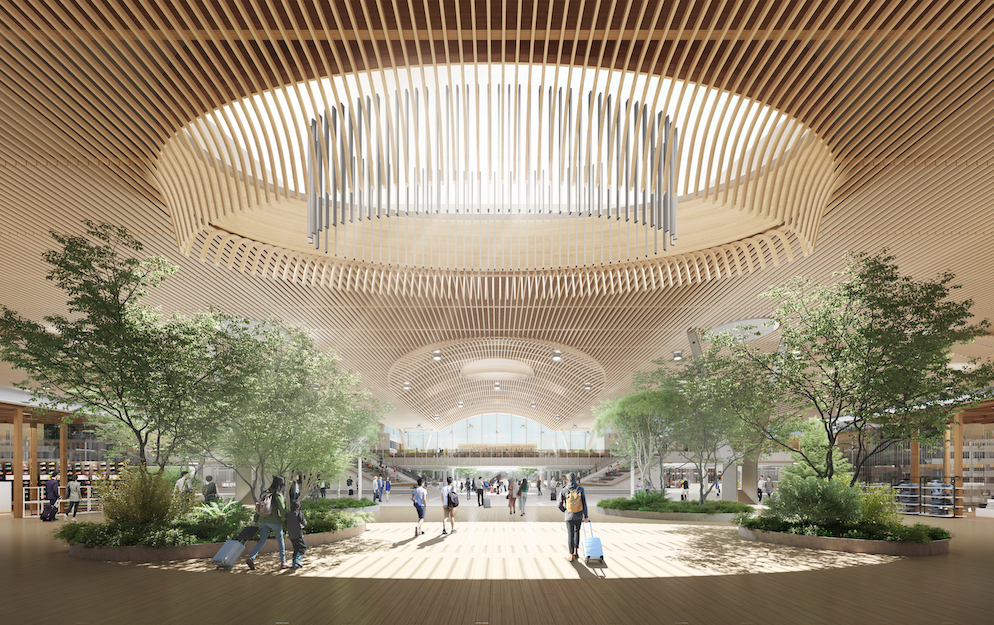 Once the new main terminal opens in 2025, you’ll see the airport filled with more of what you love about the Pacific Northwest: leafy green spaces, trees, and local restaurants and shops.
Once the new main terminal opens in 2025, you’ll see the airport filled with more of what you love about the Pacific Northwest: leafy green spaces, trees, and local restaurants and shops.
Concourse B: Upgrading to bigger and brighter (2021)
What you’ll notice most: A new permanent home for Alaska Airlines at PDX.
Why it’ll be worth it: You’ll have more comfy spaces and inspiring views to enjoy before your flight. Plus, you can experience immersive new work from artist RYAN! Feddersen.
You might remember back in 2019 when we said goodbye forever to Concourse A. Why did we demolish A? To make way for a bigger and brighter Concourse B, which construction teams are hustling to finalize throughout the first half of 2021 in preparation for its grand opening later this year. It’ll be the new PDX basecamp for Alaska Airlines.
Installing the tall window walls — which give you fresh views of airplanes landing and taking off — is B’s most visible construction milestone. But nailing the interior details is just as important. From the wooden panels to the lush greenery, local builders and craftspeople are making one final leap to finish Concourse B in true Pacific Northwest style.
 We’re currently hustling to finish the brand-new Concourse B. The image on the left shows our work in progress. To the right, you get a preview of what the concourse will look like when it’s finished this summer.
We’re currently hustling to finish the brand-new Concourse B. The image on the left shows our work in progress. To the right, you get a preview of what the concourse will look like when it’s finished this summer.
Flexible transportation: Easier and speedier (2021-2023)
What you’ll notice most: Less congestion on Airport Way and more ADA-accessible parking spaces.
Why it’ll be worth it: You won’t have to take a shuttle to pick up your rental car. And finding your rideshare driver will be a breeze.
Ground transportation upgrades will soon make it easier to get in and out of PDX. While it includes a wide range of complex infrastructure improvements, this project is simply about streamlining your commute, no matter how you choose to ride.
Fall 2021 marks the completion of the airport’s new ground transportation hub. And when it formally opens in November, it’ll make your airport experience speedier and less stressful. The new complex brings all rental cars on-site (no more shuttles!), opens 2,225 close-in parking spaces (including 30 ADA spots) and adds nearly three dozen new electric vehicle charging stations.
The modern basecamp for ground transportation is one key part of a larger undertaking, with additional enhancements along the way. Opening in 2023, a new rideshare pick-up center will ease congestion on the roadway. A second light-rail track for MAX trains (complete in 2024) and improvements to cycling paths will make transit riders and cyclists happier, too.
 Our new basecamp for ground transportation involves a lot of moving pieces. On the left, you see teams working on the new rental car center and office complex. The rendering to the right shows what it’ll look like when it’s finished.
Our new basecamp for ground transportation involves a lot of moving pieces. On the left, you see teams working on the new rental car center and office complex. The rendering to the right shows what it’ll look like when it’s finished.
Curious how construction might affect you?
Whenever you’re ready to travel again, you can check out the construction update hub on FlyPDX.com. You’ll find the latest information and frequently asked questions about how these projects might affect your trip. You can also send us a message here: hello@pdxnext.com. We’re always happy to help.
